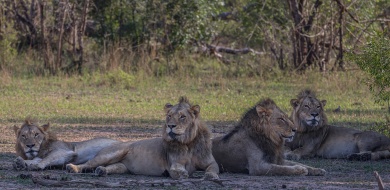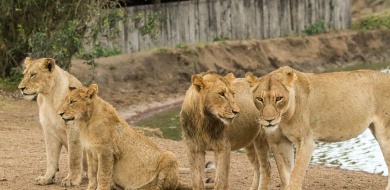A Week in the Bush Vol. 567
on Oct 15, 2025Numerous sightings have been recorded of a female cheetah and her three sub-adult offspring as they navigate the challenges of life on the open plains. Often seen resting atop termite mounds in the early morning, the small family uses these elevated vantage points to scan for danger and potential prey across the grasslands. Later in the day, they have been observed approaching nearby waterholes — cautious yet composed — aware that such vital stops also draw larger predators. With full bellies from recent hunts, the youngsters mirror their mother’s every move, learning the delicate balance between survival, vigilance, and rest under her steady guidance.
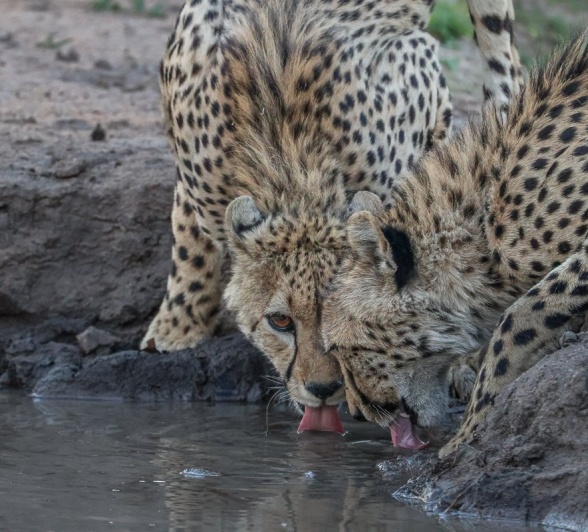
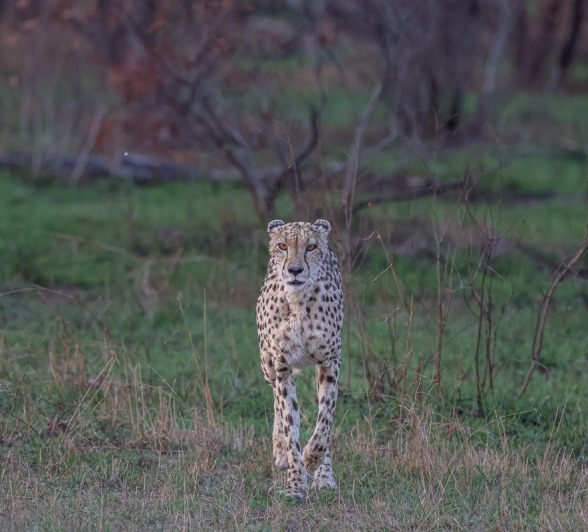
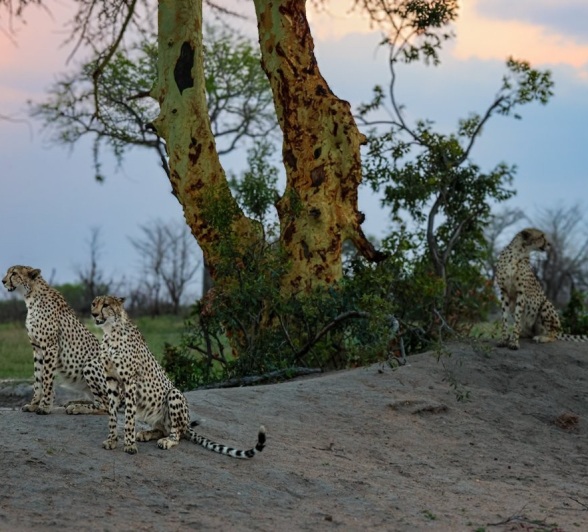
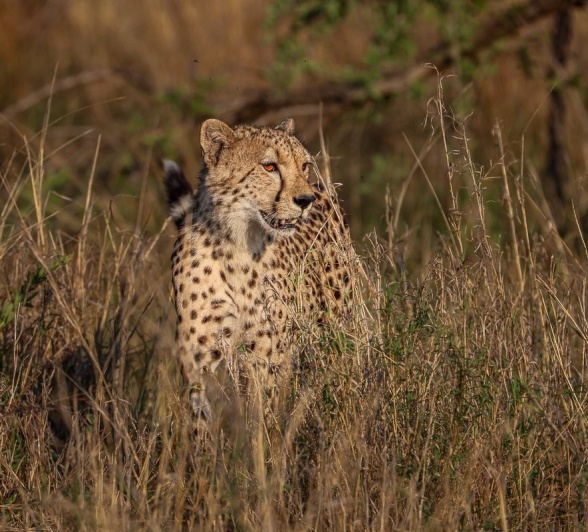
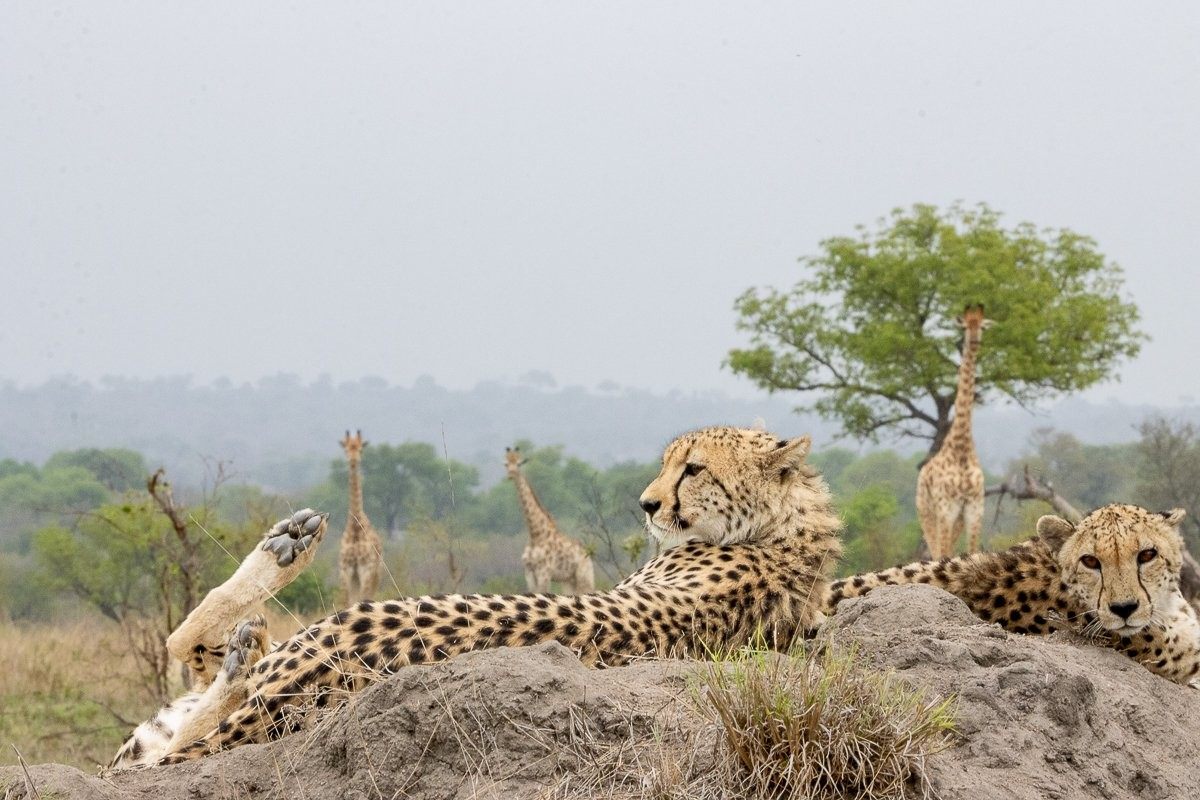
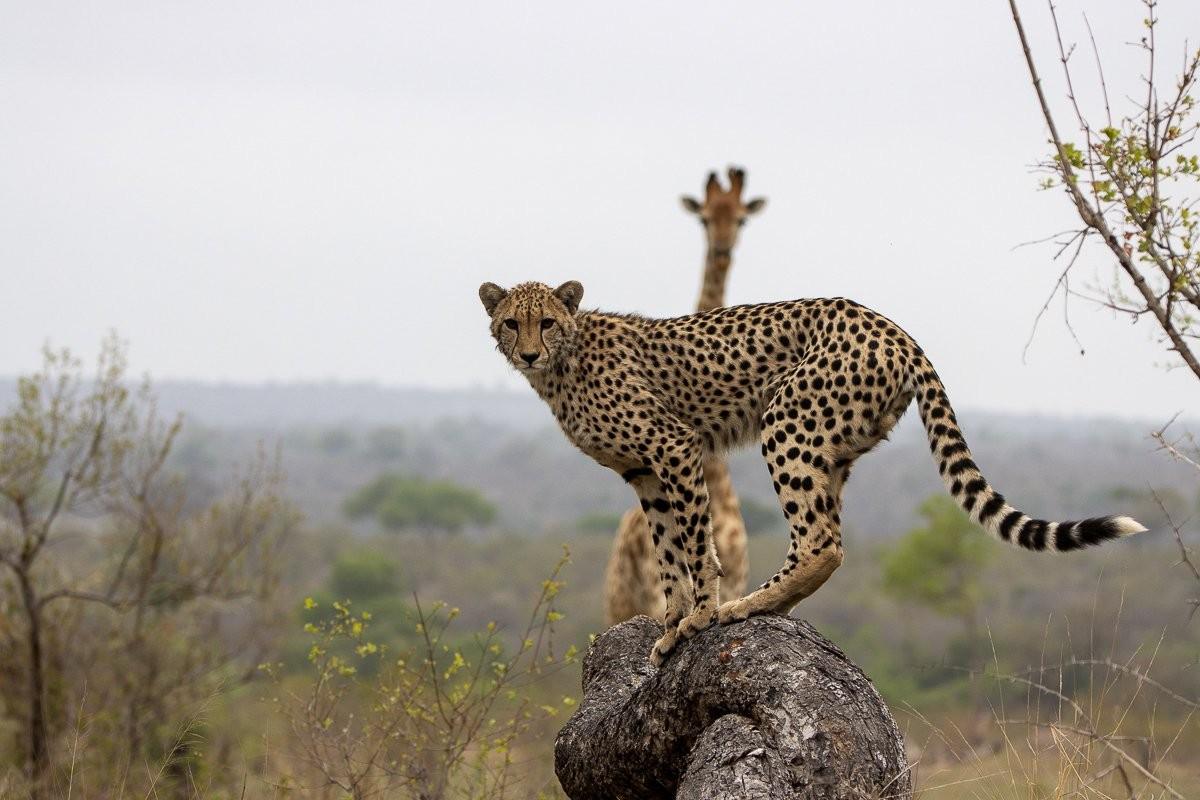
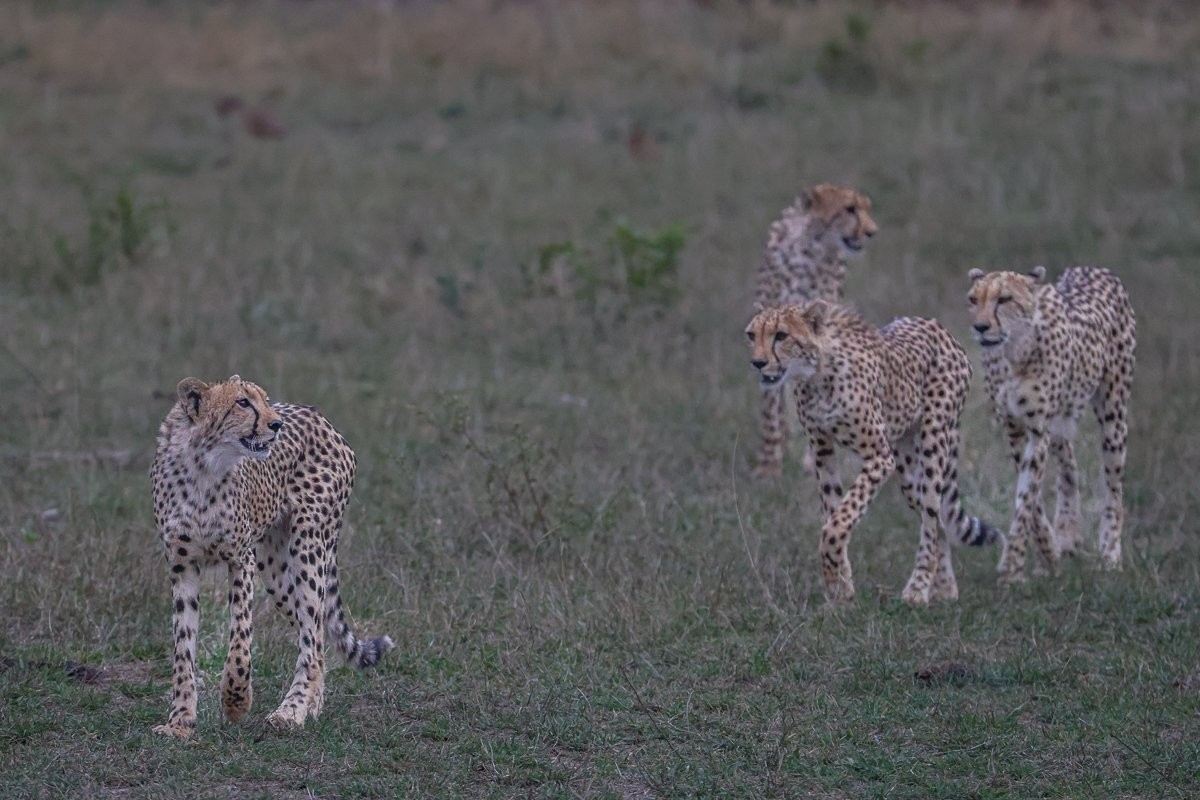
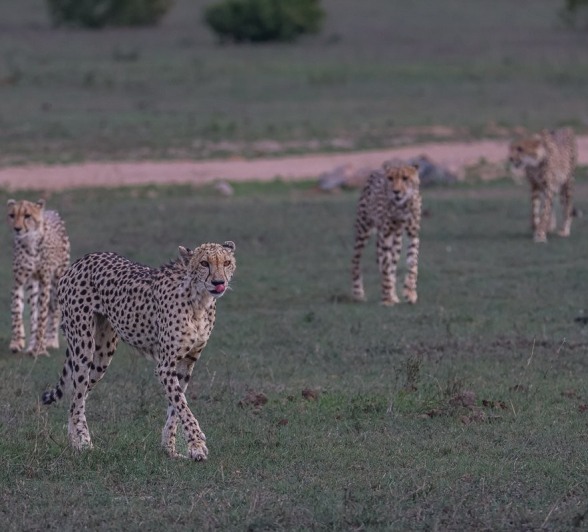
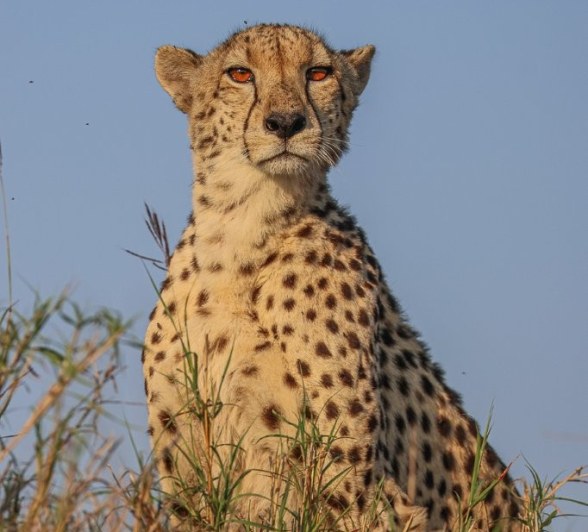
We found the young Kurhula female leopard towards the end of our safari and followed her for a while. Watching her beautiful spotted coat disappear into the bushes and fade into the thick darkness was truly mesmerising. Leopards have a tremendous advantage over their prey at night, and while they can be opportunistic hunters, most of their hunting takes place under the cover of darkness.
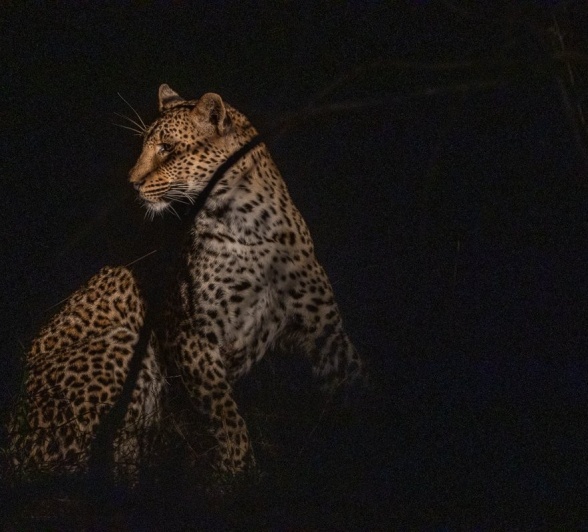
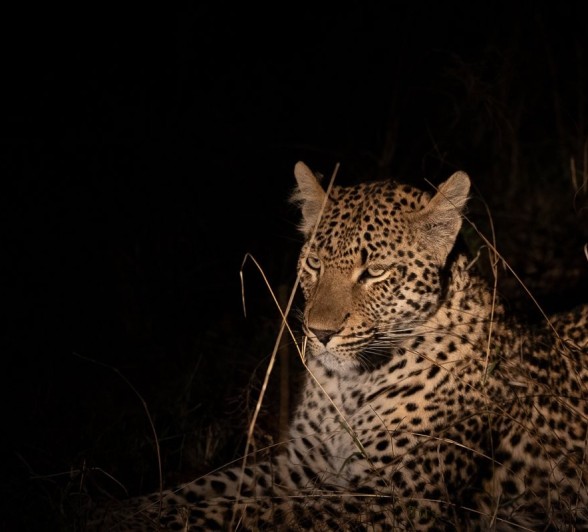
As the sun dipped below the horizon, the Khulwana male made a dramatic appearance right in front of Earth Lodge. He was calling repeatedly and scent marking, actively reinforcing his territory. This behaviour is typical of dominant males, using both vocal and scent cues to communicate with rivals and potential mates. A thrilling reminder of the wild beauty that surrounds us here in the bush.
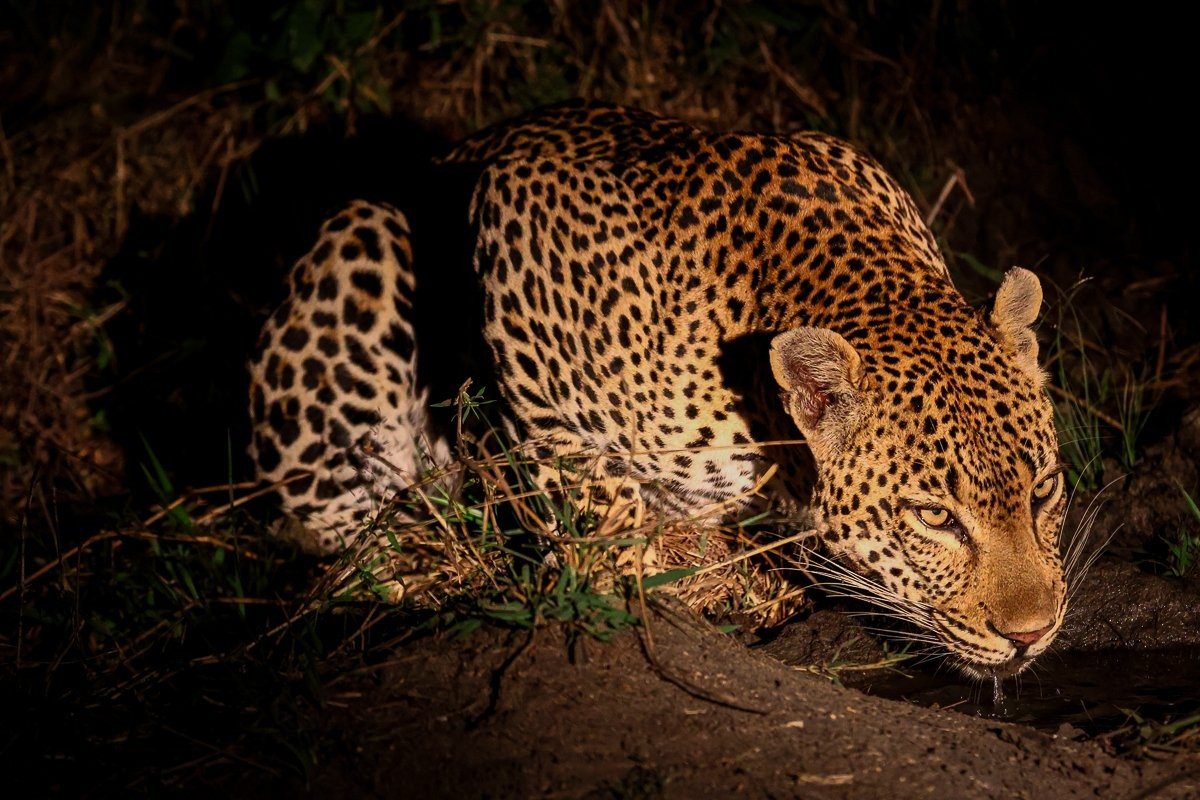
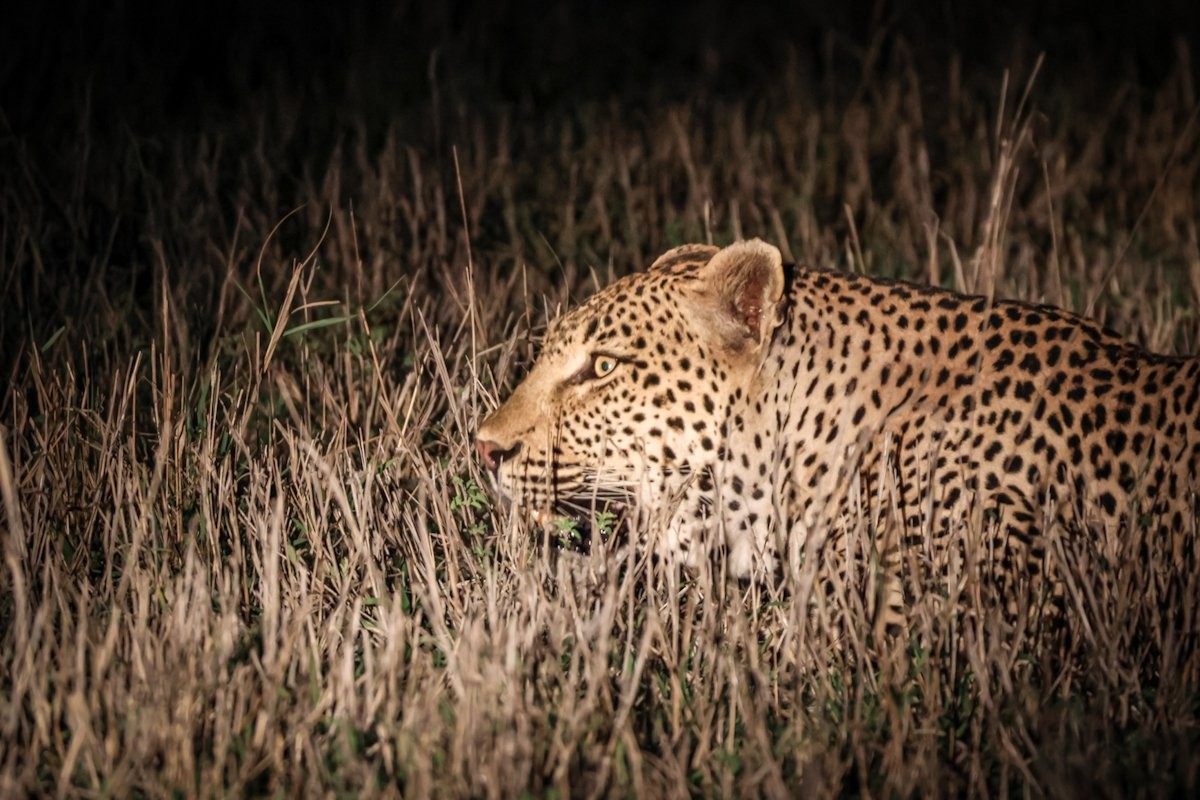
We’ve been treated to many sightings of the Golonyi female leopard and her sub-adult male cub this week — offering glimpses into their evolving bond and the young male’s steady journey toward independence.
Often seen resting or playing atop rocky outcrops, the pair makes use of these vantage points for safety, comfort, and hunting opportunities. On cooler mornings, Golonyi can be found basking in the golden light while her inquisitive son practices his skills — mock-stalking antelope or testing his courage against passing hyenas under his mother’s calm, watchful gaze.
Between playful chases through trees and over rocks, the duo has also been seen feeding on small kills hoisted securely into the branches. As the day warms, they retreat into the shade of riverbeds and drainage lines, where lessons in patience, stealth, and restraint continue. Each encounter with Golonyi and her growing cub reveals a delicate balance of tenderness and guidance — a living testament to the quiet strength and enduring grace of a mother leopard in the wild.
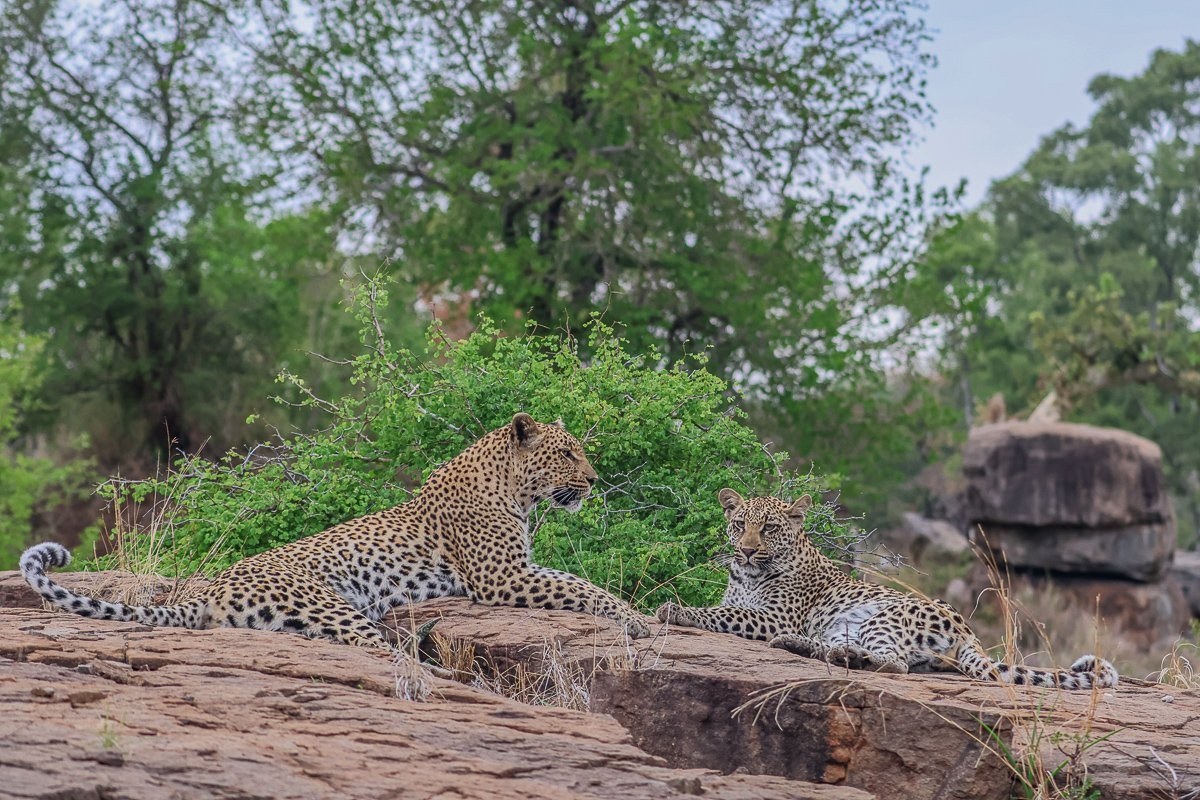
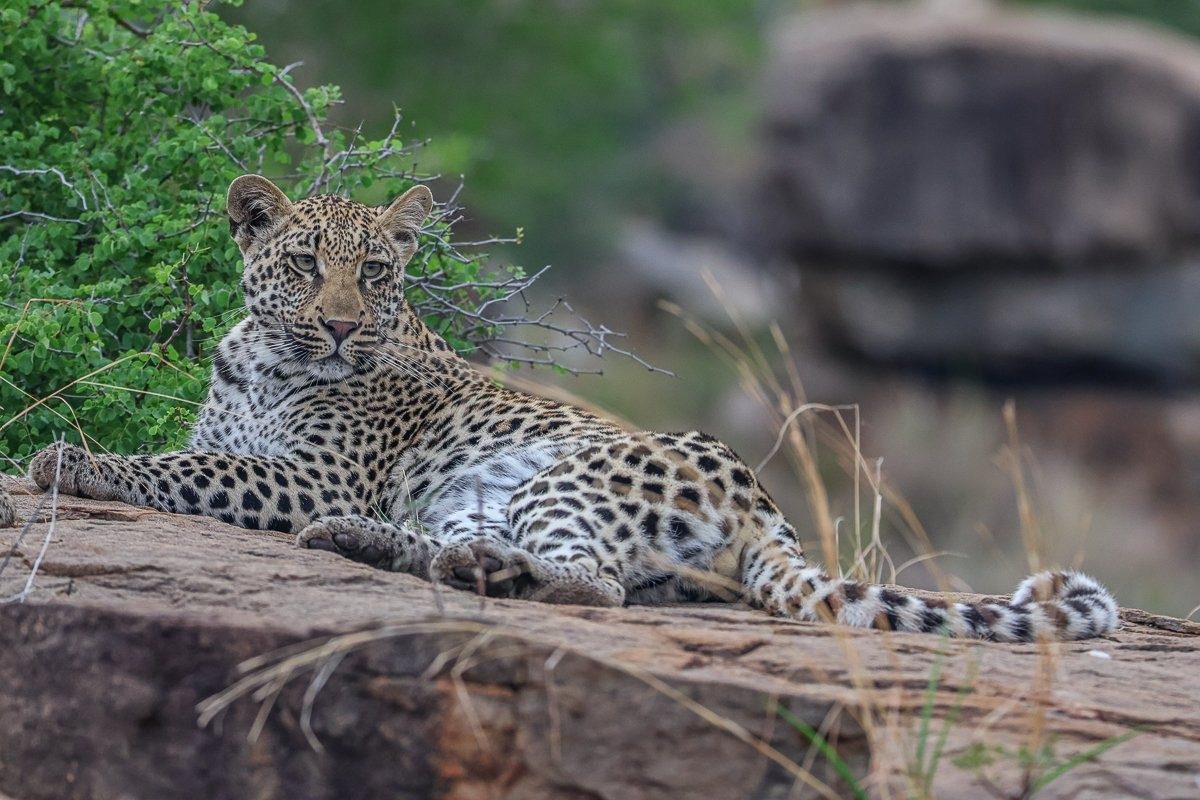
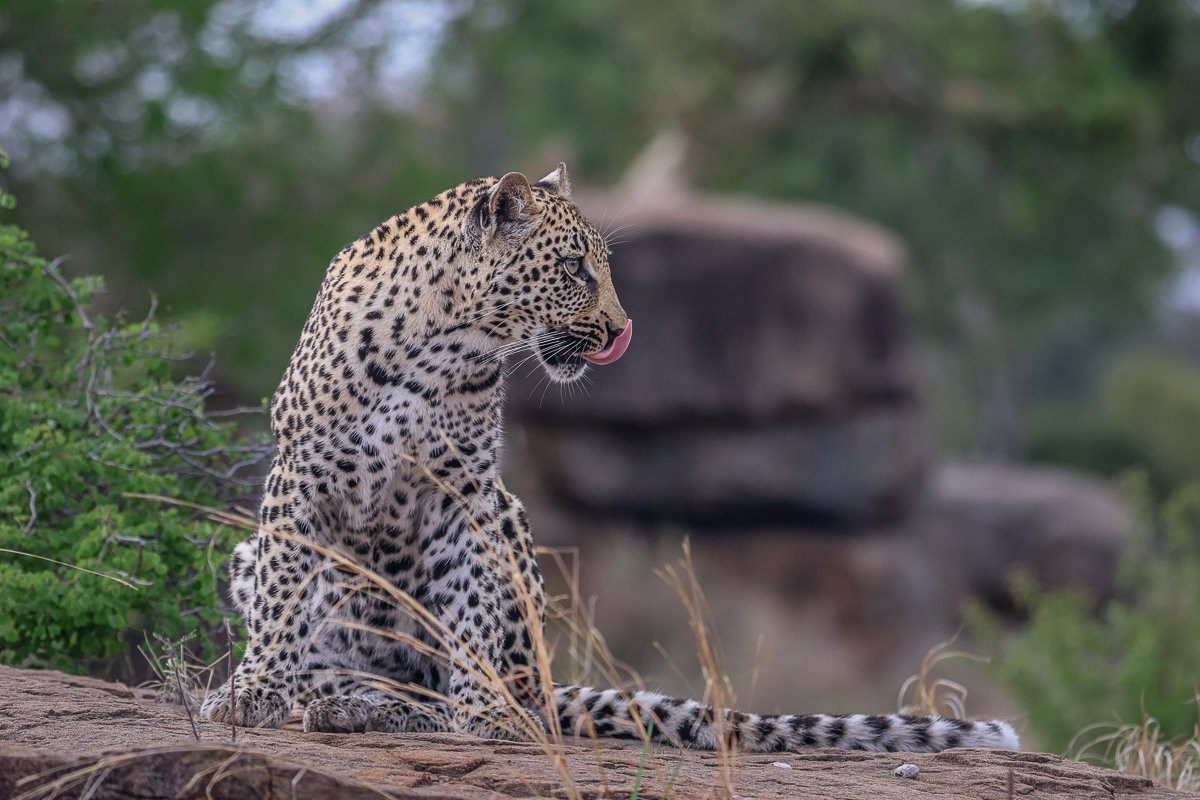
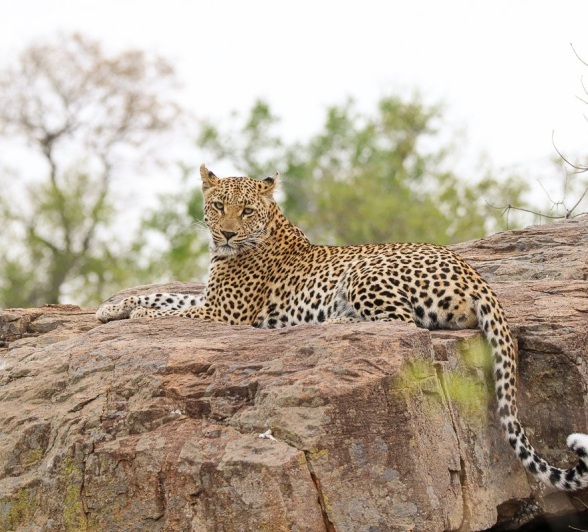
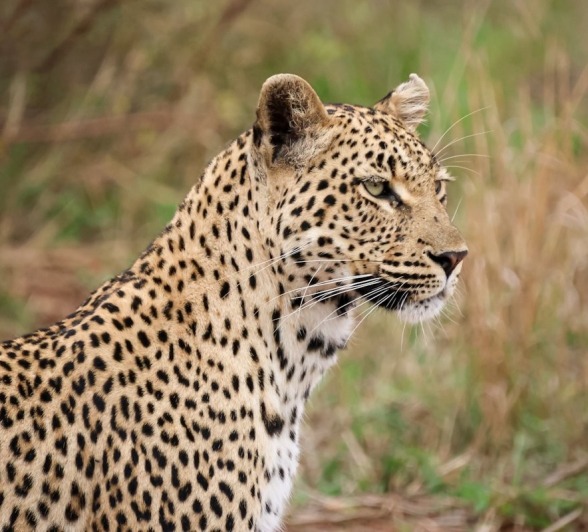
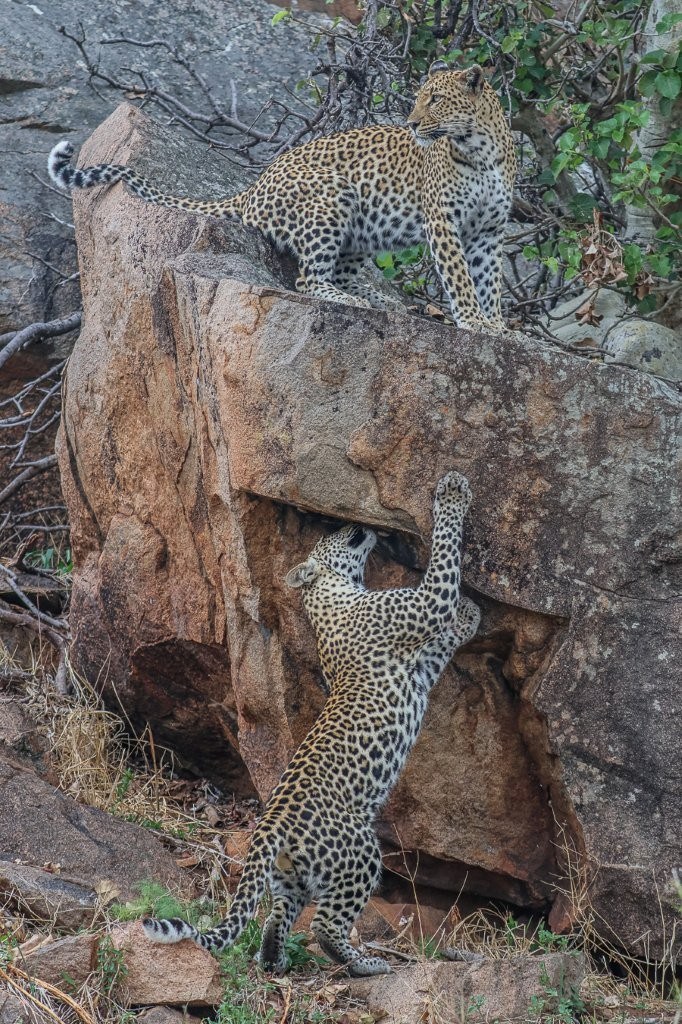
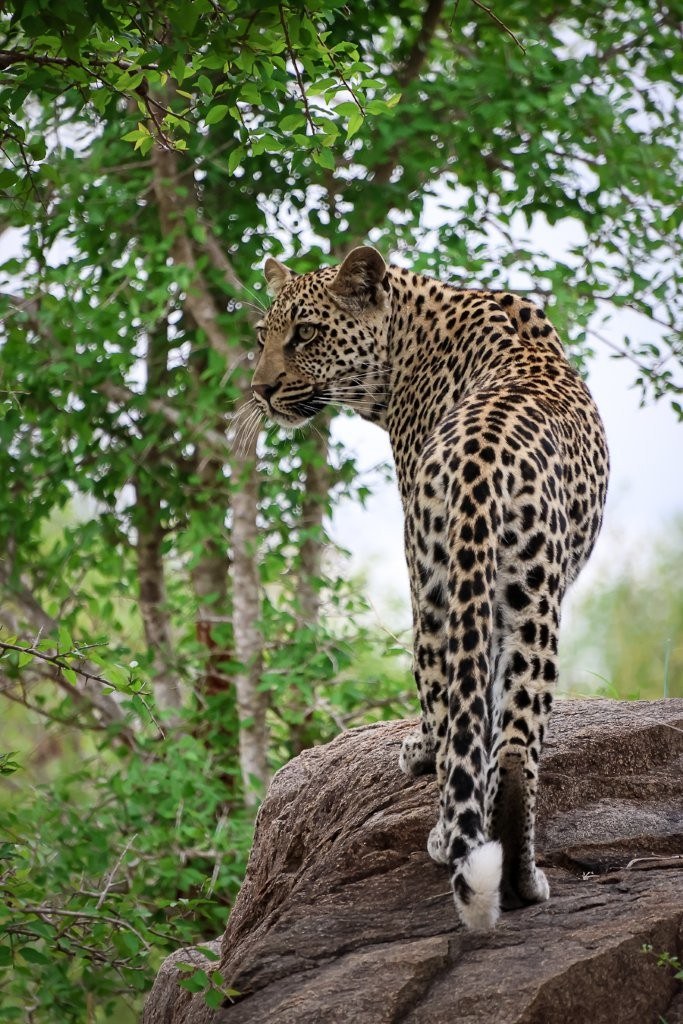
Numerous sightings of the four young N’waswishaka male lions have offered a fascinating glimpse into their nomadic journey toward dominance. Still unestablished and without a territory of their own, the coalition moves purposefully through the bush, trailing large herds of buffalo and seizing every opportunity that comes their way.
On several occasions, they have been found feeding on buffalo carcasses — the spoils of their own hunt as well as a stolen kill from the Msuthlu Pride. These encounters highlight both their growing strength and their strategic cunning, essential traits for survival in this competitive stage of their lives.
Recently, with the Southern Pride venturing further south and the dominant Gijima males holding to the north, the southern reaches of the reserve have become something of a refuge for these up-and-coming males. Each sighting reveals their deepening bond, growing confidence, and emerging power — a brotherhood steadily forging its place in the lion hierarchy.
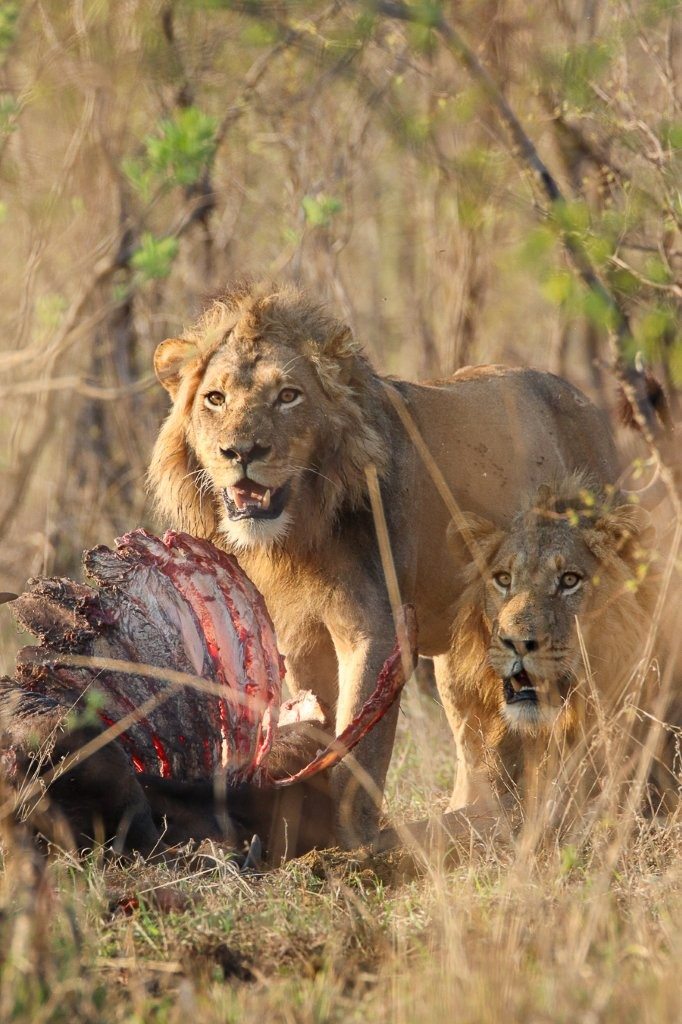
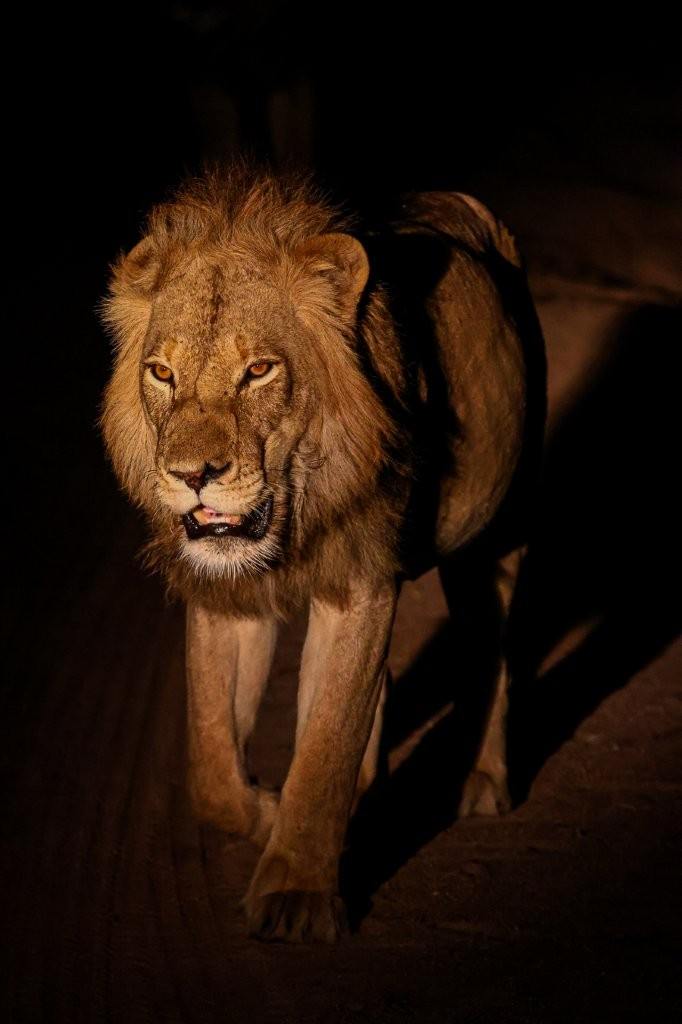
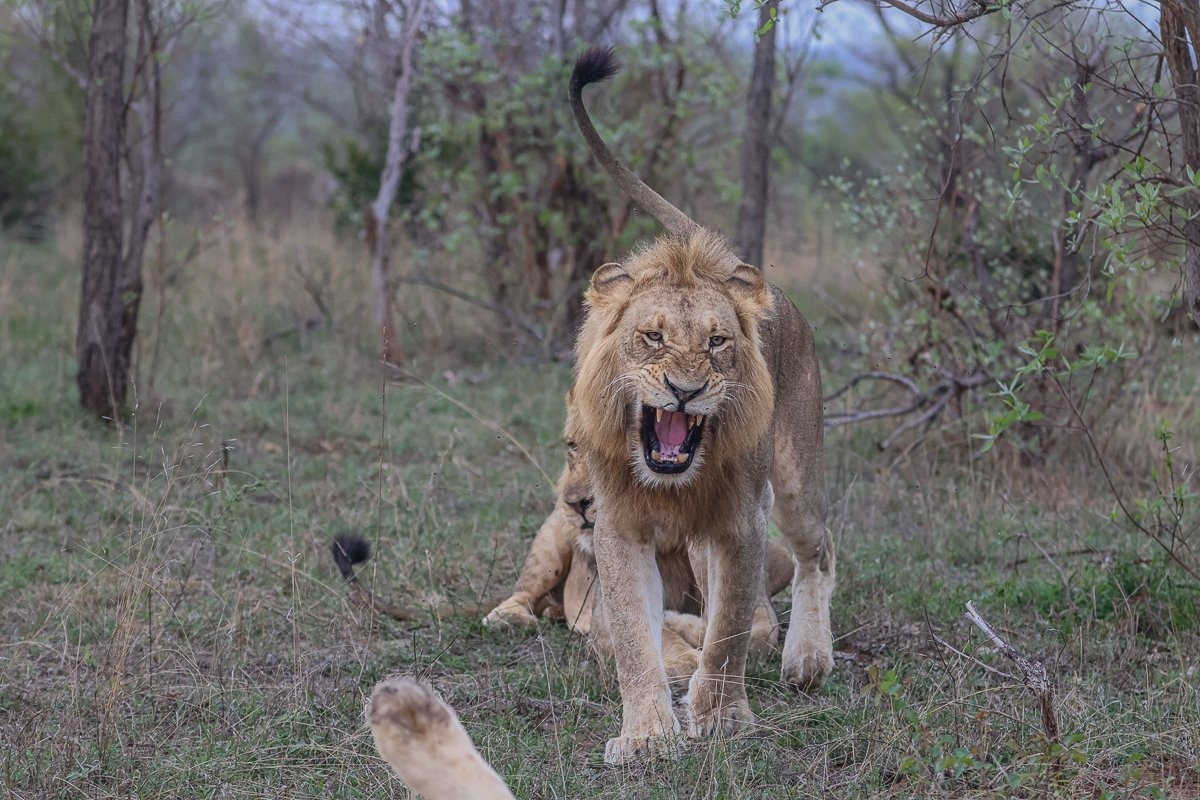
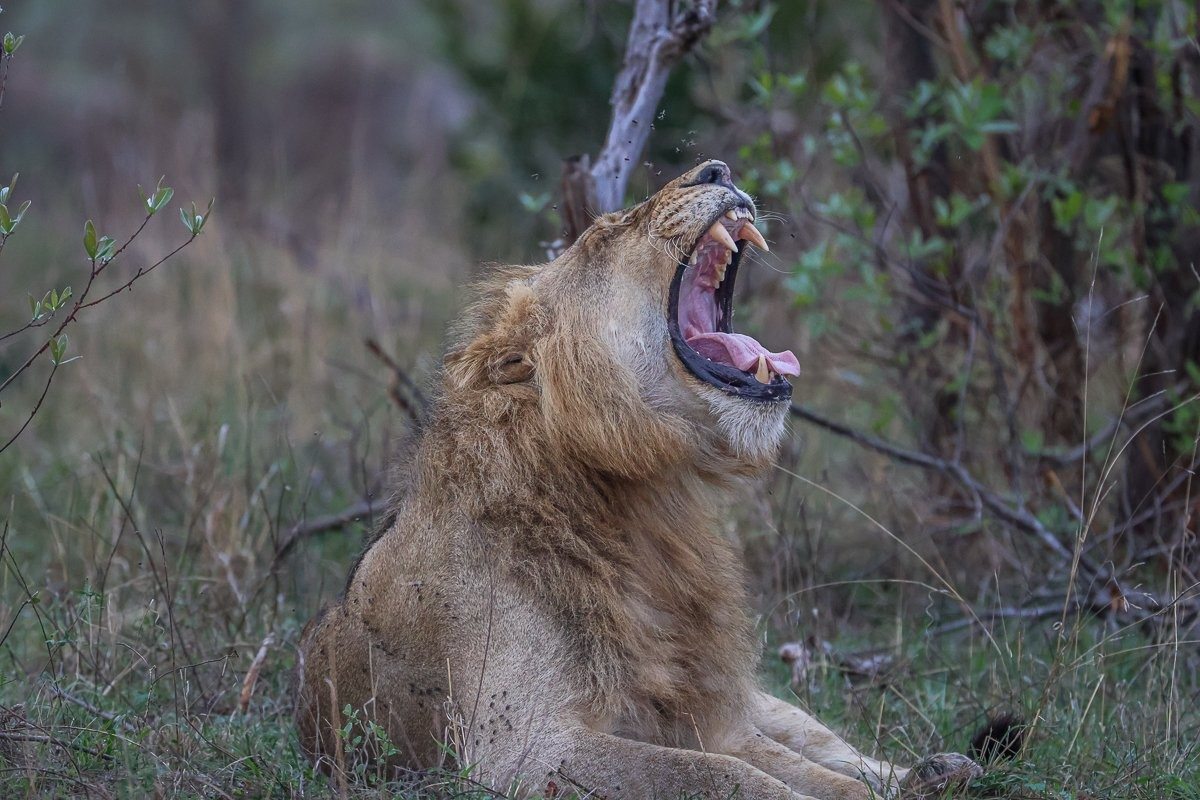
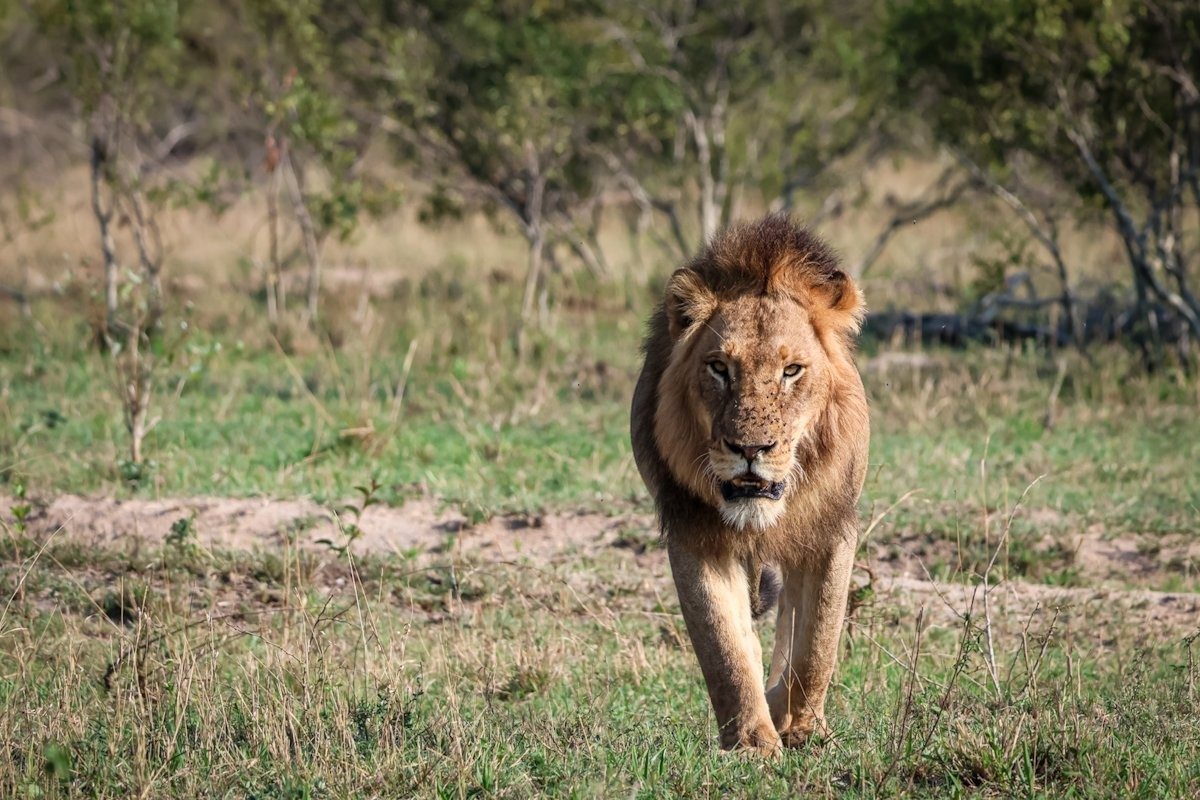
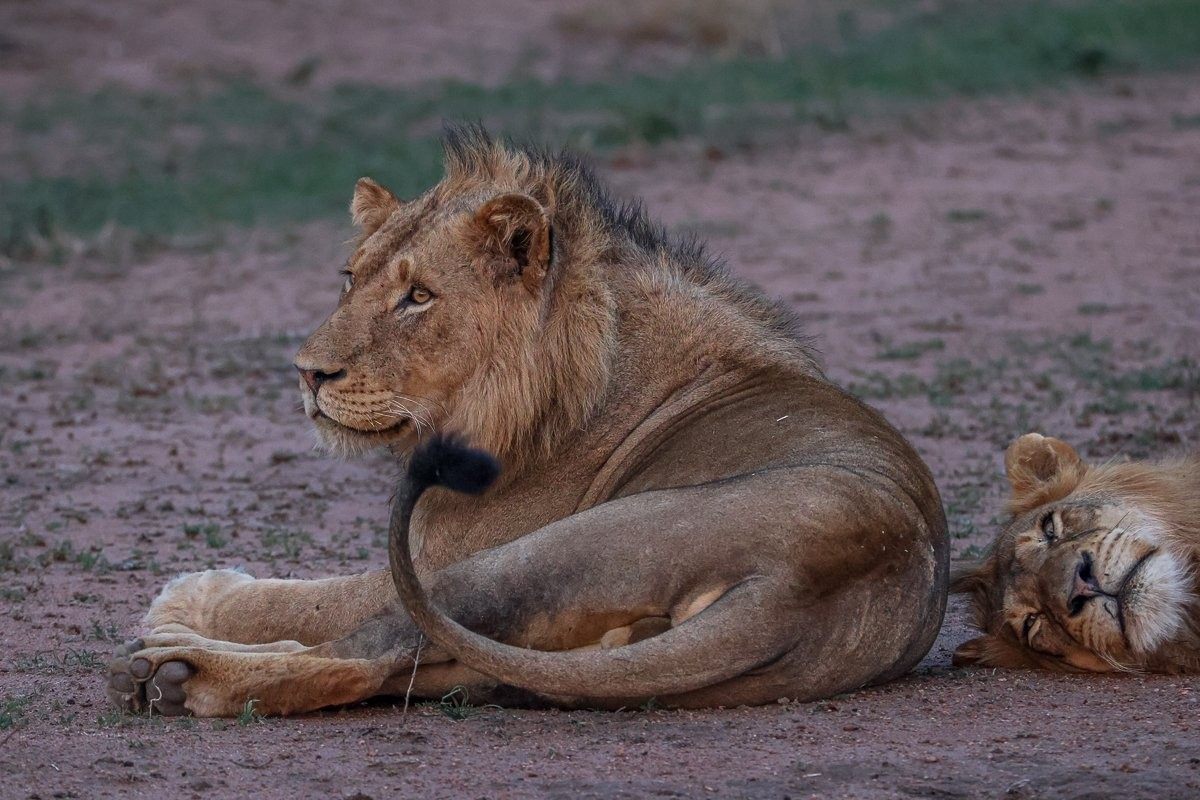
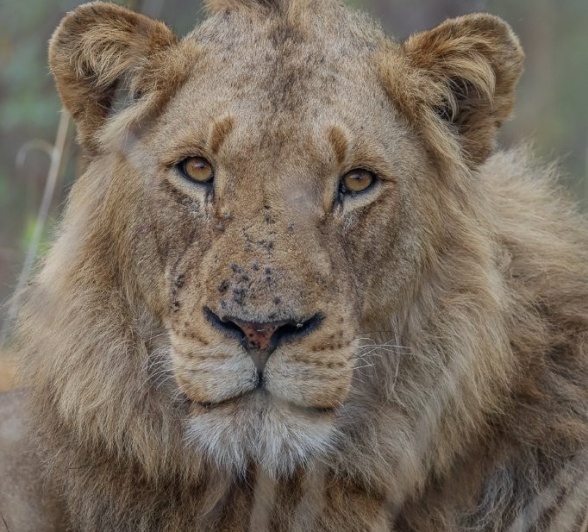
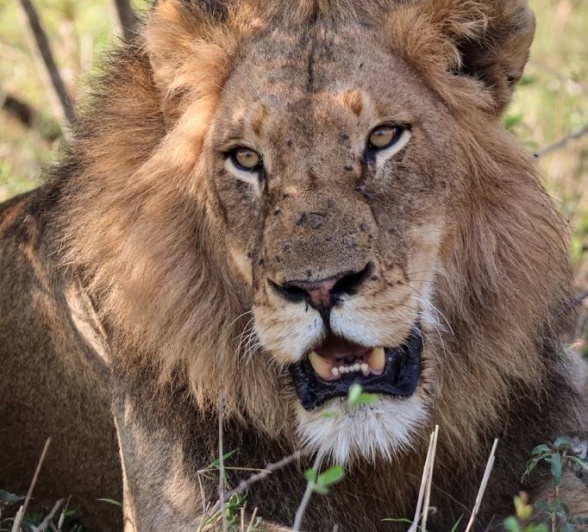
We spent some time with the Msuthlu Pride when one of the younger cubs approached an older male. The cub rubbed against him and then flopped down to the ground. In response, the older male began grooming the cub’s face. When the cub shifted and rolled over, the grooming continued across the rest of his body.
This behaviour, known as allo-grooming, occurs among pride members not only to strengthen social bonds but also to maintain hygiene. Using their backward-facing keratin spines, called papillae, lions can remove dirt, debris, and parasites and, in this case, the blood from the wildebeest they had feasted on the night before.
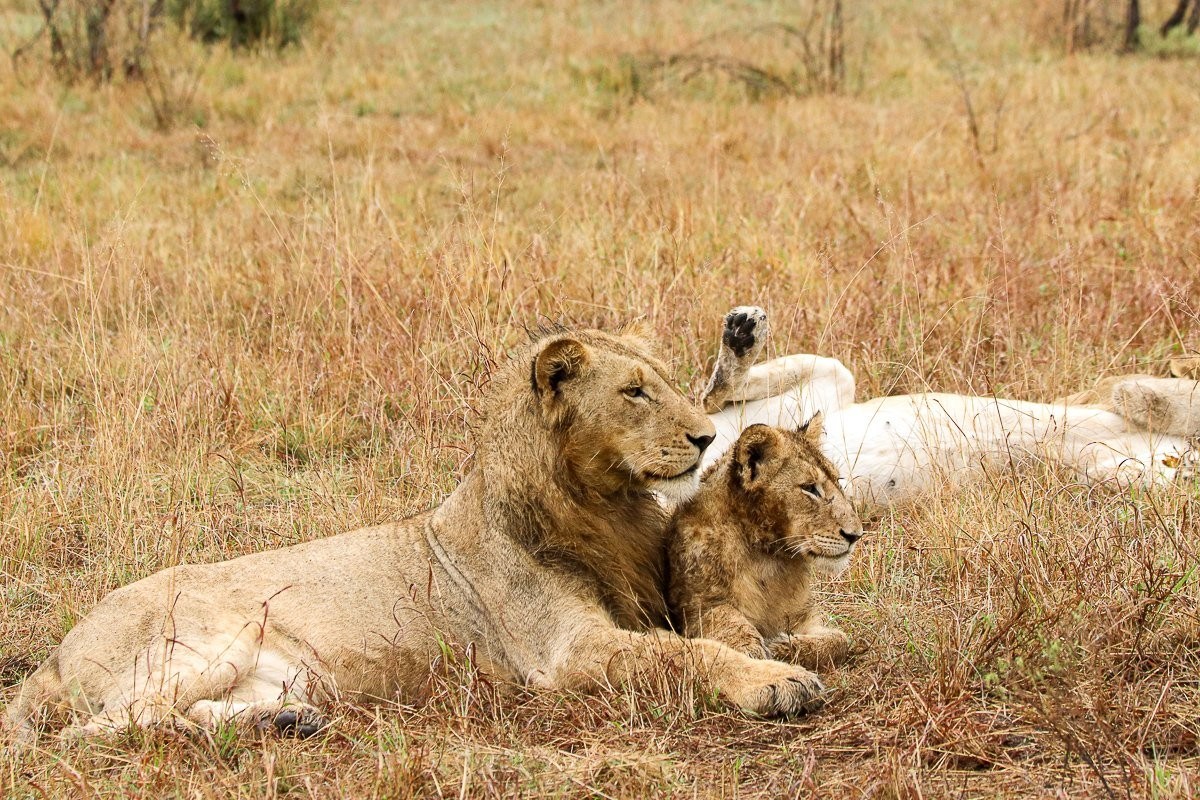
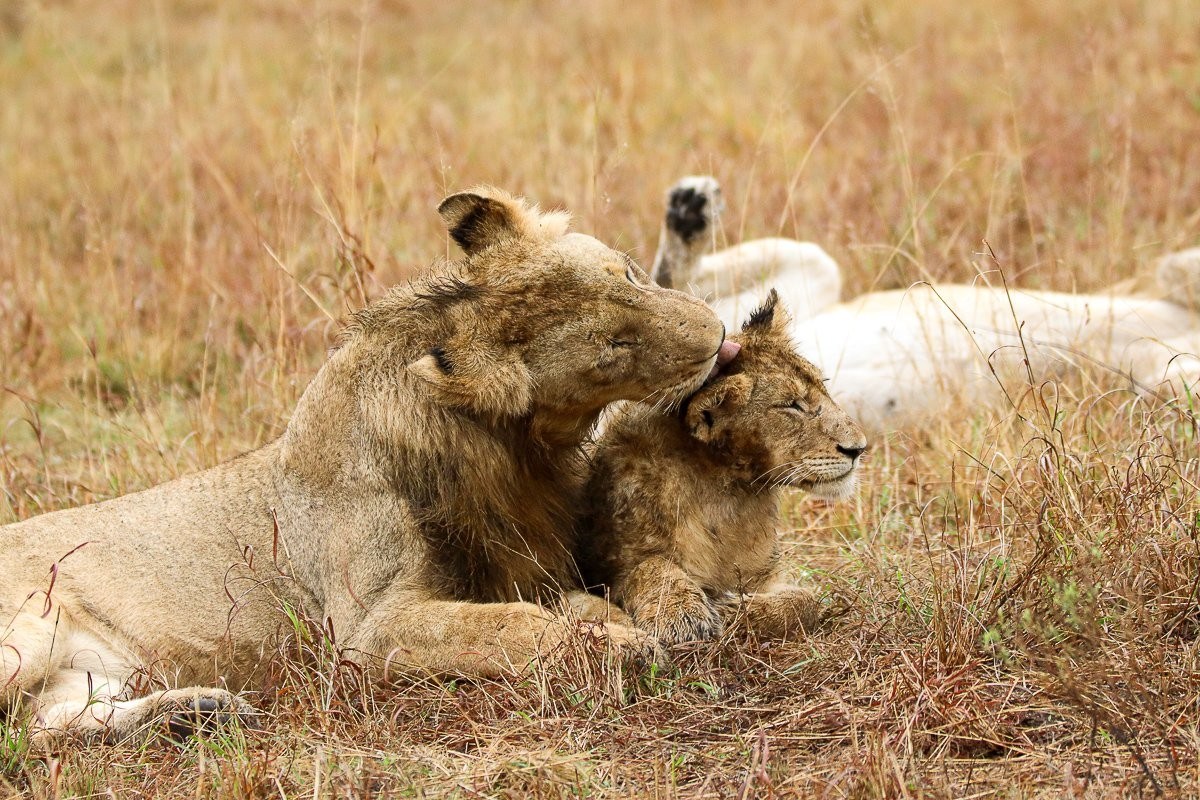
The Styx Pride has had a successful couple of days. They were seen finishing off an impala kill, deep within a dense Tamboti thicket. Access to the rest of the pride wasn’t easy, but the three young cubs put on a wonderful show as they tussled over the remains of the impala. There was only a small amount of meat left on the head, yet they took turns playing with it, full of energy and mischief. For a large pride like the Styx, an impala is little more than a quick snack - just enough to provide a short burst of energy before they set off again in search of something more substantial.
And something more substantial they certainly found the next day. After a well- coordinated hunt, the pride took down a young giraffe. Lions rely on teamwork and strength to subdue large prey, and giraffes, despite their size, are vulnerable - especially the young. This kill not only sustains the pride but also plays a role in maintaining balance in the ecosystem, where predator and prey interactions shape the natural rhythm of the bush.
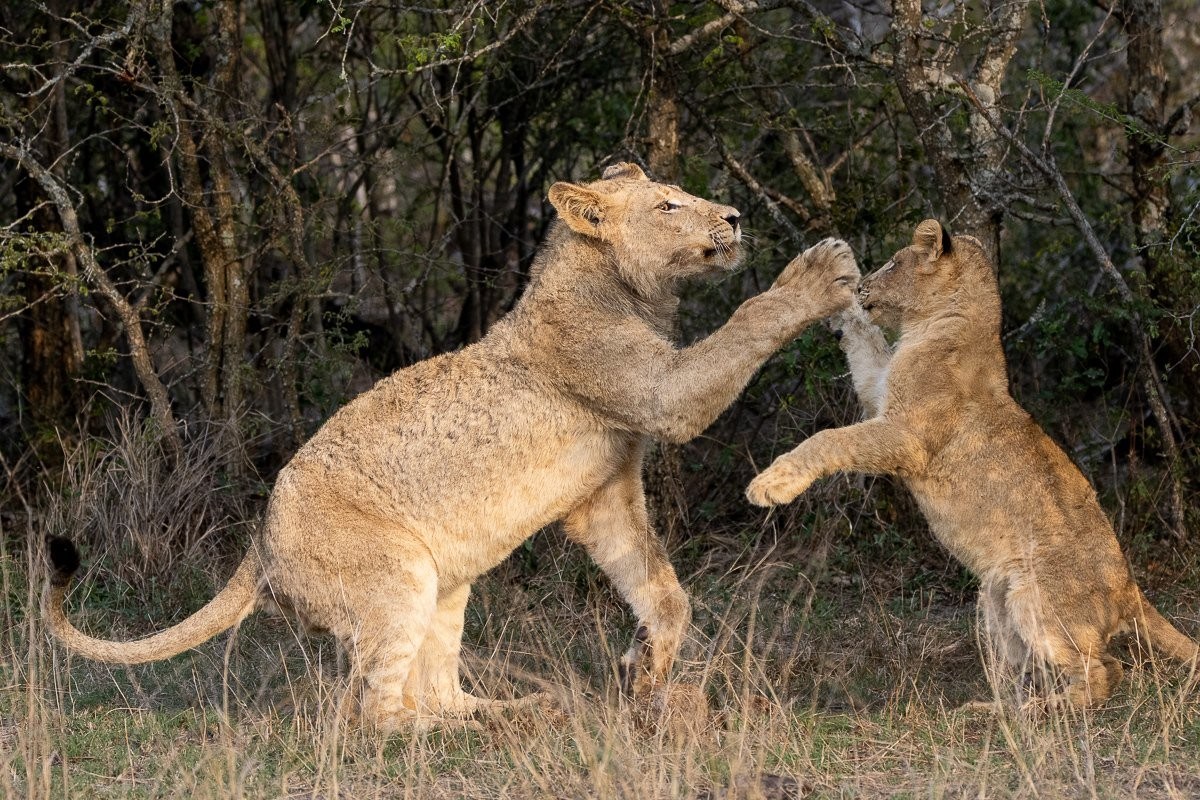
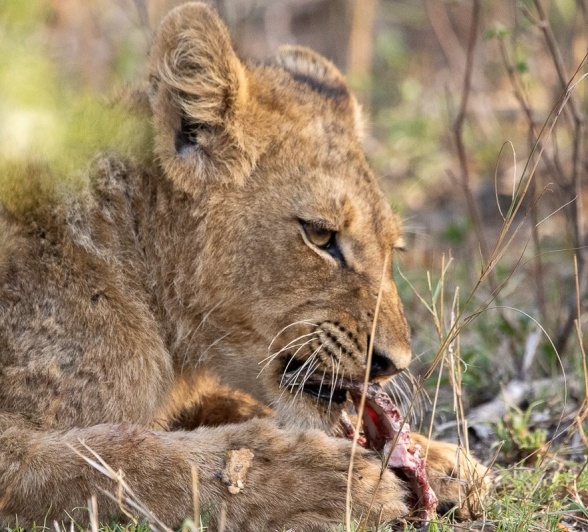
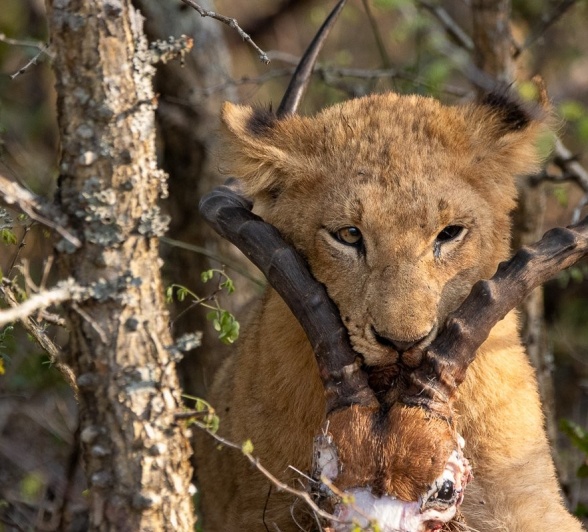
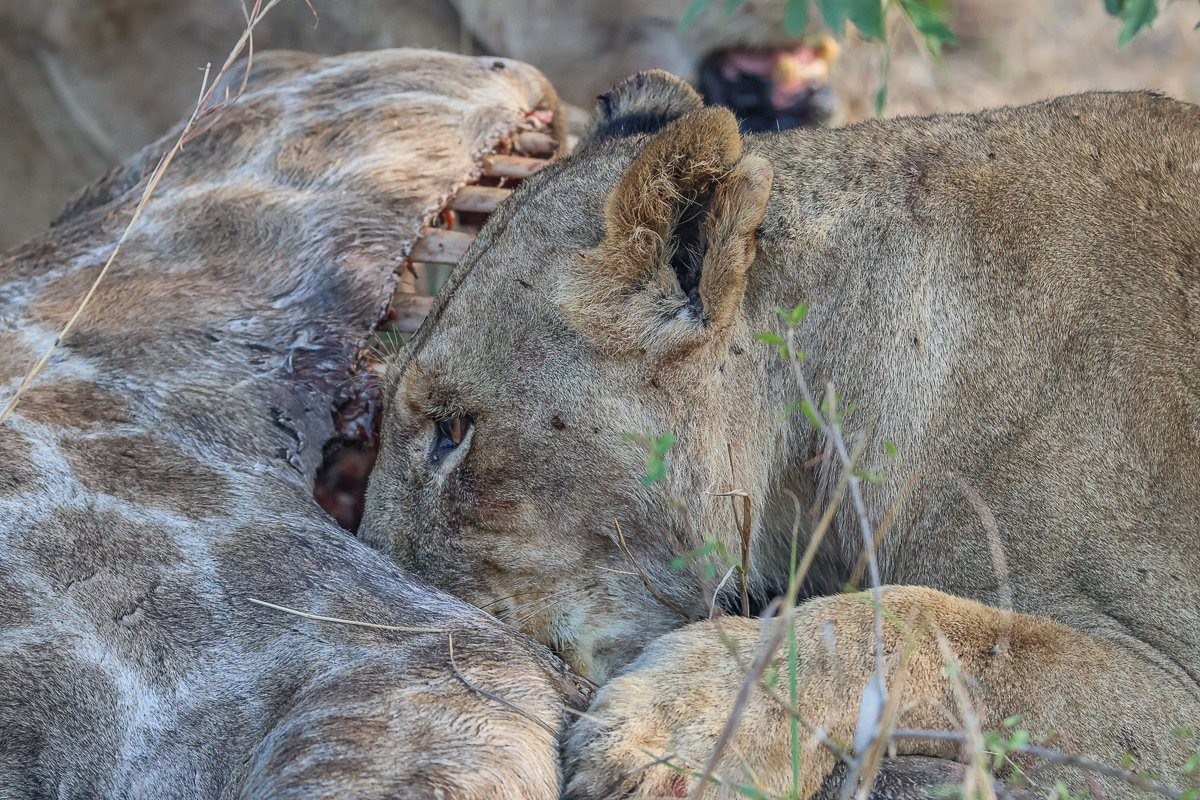
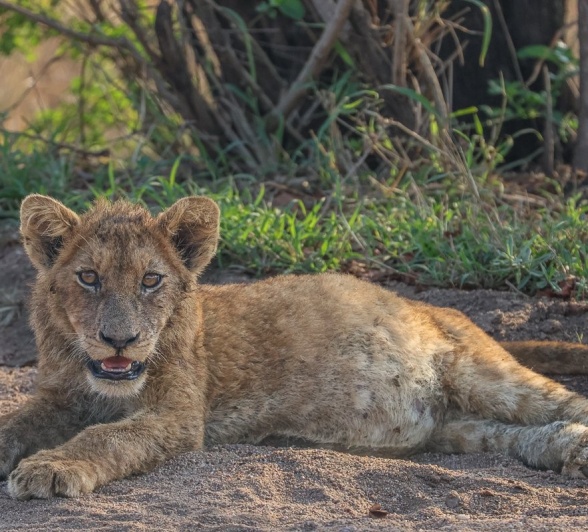
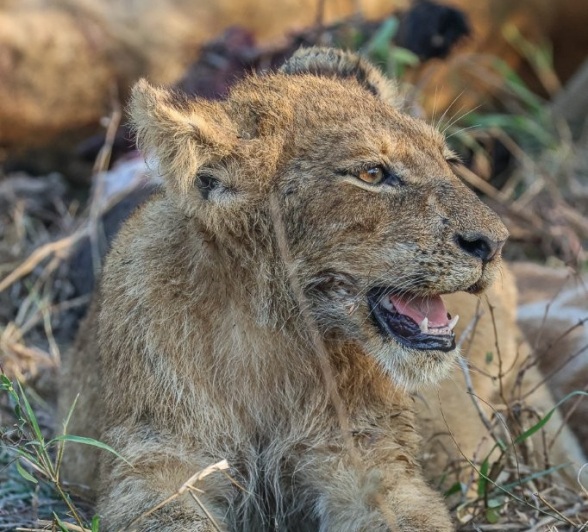
A full moon rises over the bushveld, casting a silver glow across the landscape. Shadows stretch long and the night comes alive, as nocturnal creatures stir beneath the quiet, watchful light.
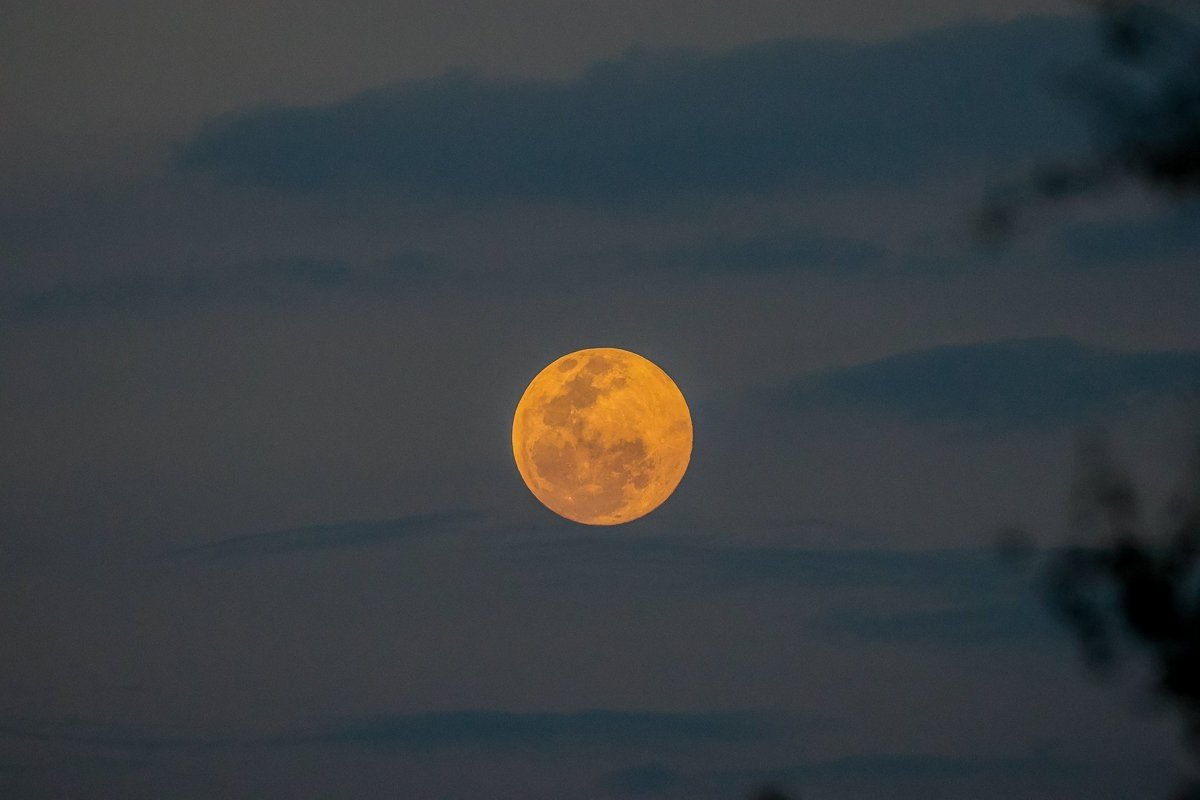
In the late afternoon we watched a group of White-faced Whistling Ducks as they slowly got ready to roost. They are certainly one of the most beautiful ducks in the region and it was a great way to end the afternoon.
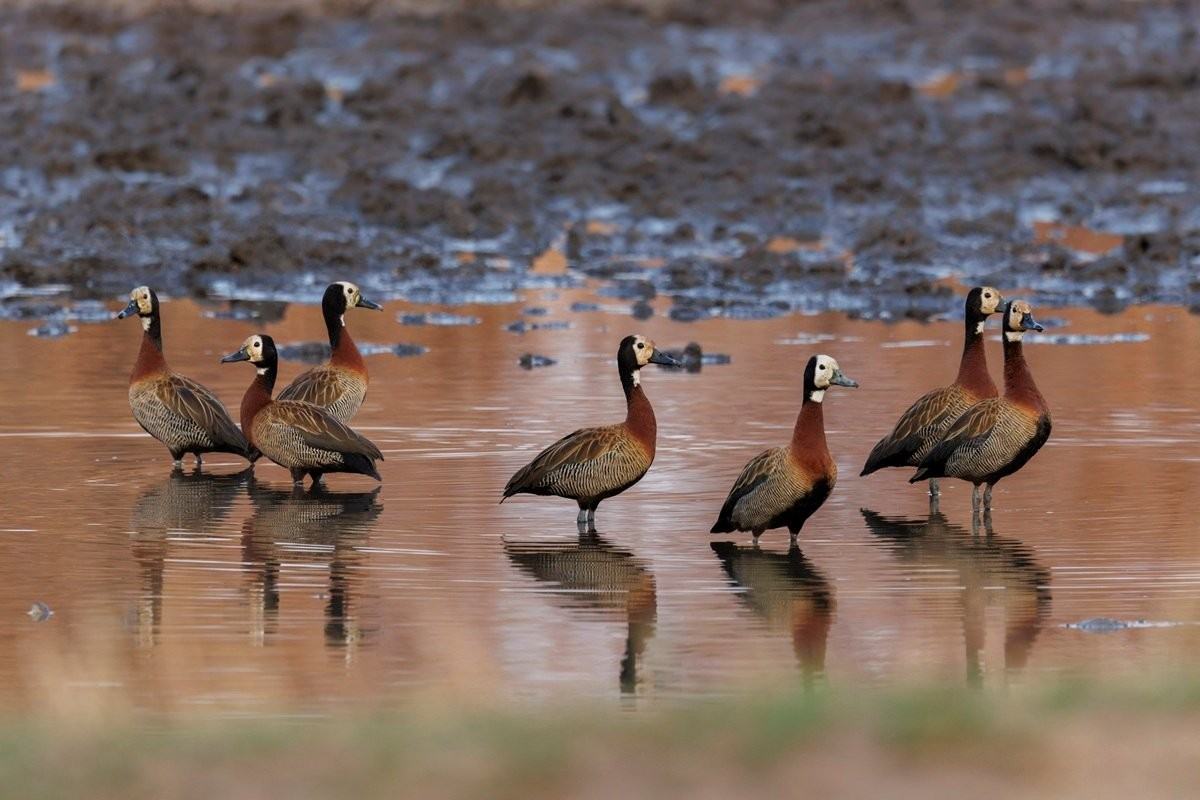
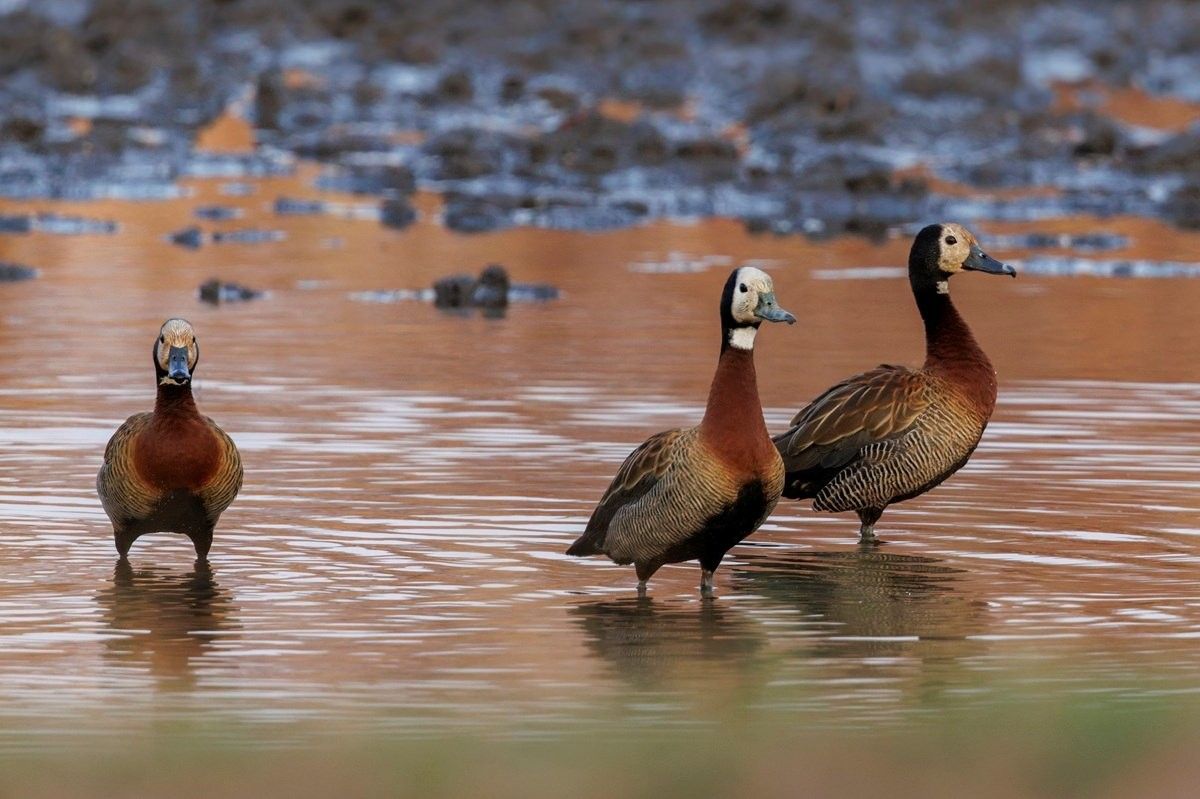
We followed a small breeding herd of elephants as they moved through the trees towards a small waterhole in one of our open plains. Positioned at the waterhole, we patiently waited for the herd to come for a drink, and at the back of the herd, a small elephant came out of the bush.
Still unsteady on his legs, he tried his best to keep up with his mother and the rest of the herd. While the herd drank from the waterhole, he tried to mimic what the others were doing but his trunk seemed to have a mind of its own. By the time he realised he could bother the other elephants while they were drinking, his mother released a grumble, and it was time for the herd to move off again. As they walked away, we were left with a wonderful view of the striking size difference between mother and calf.
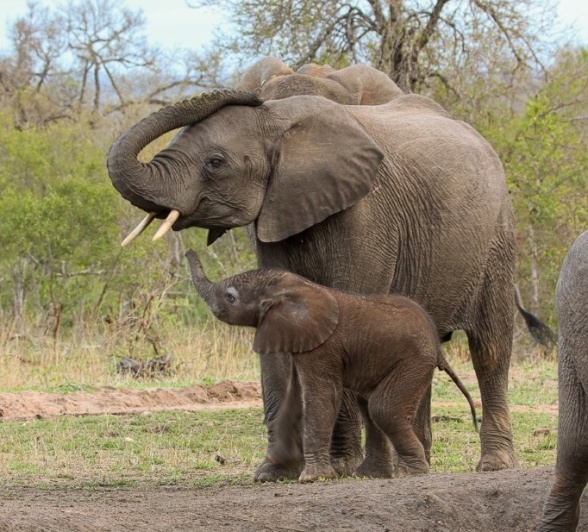
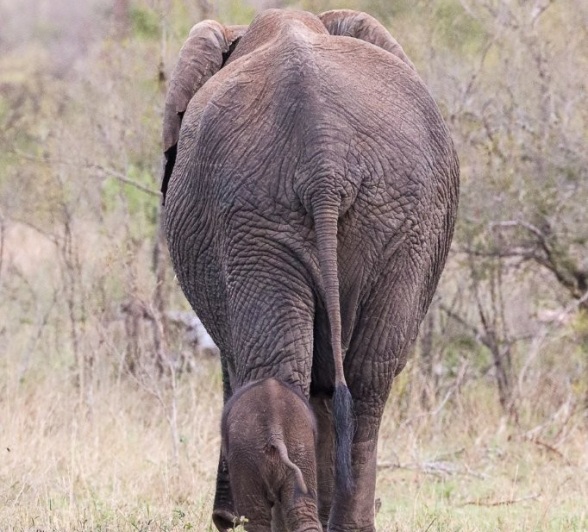
It was an incredible sighting watching this Martial eagle go after a pair of Egyptian geese near a waterhole. Although it was challenging to photograph, the experience itself was unforgettable — seeing the eagle struggle to lift its prey into the air, only to finally succeed in hoisting it up into a tree, was truly remarkable.
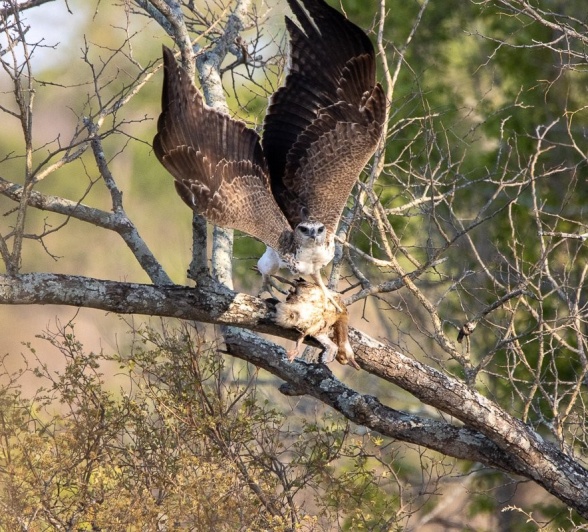
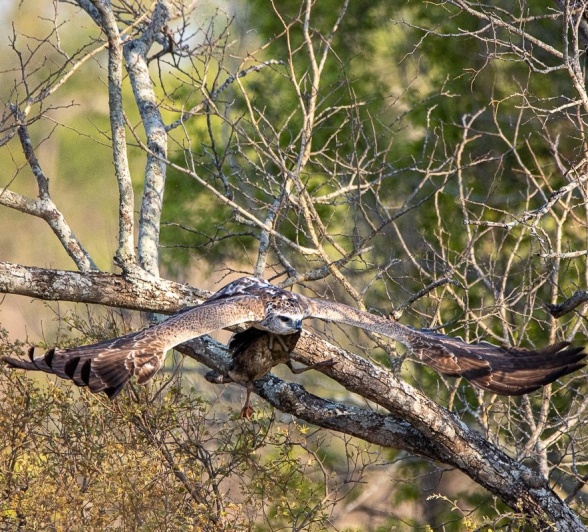
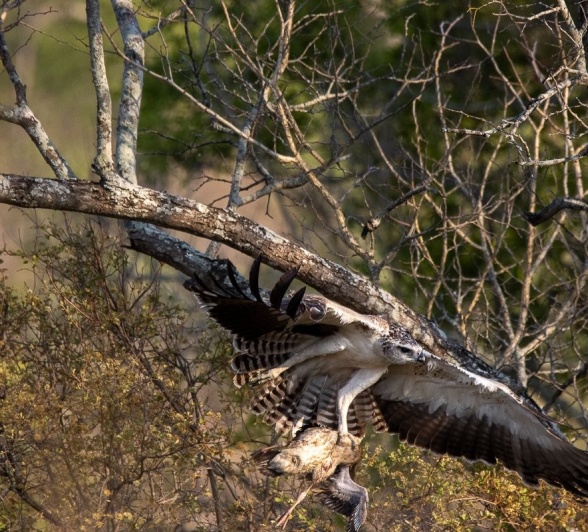
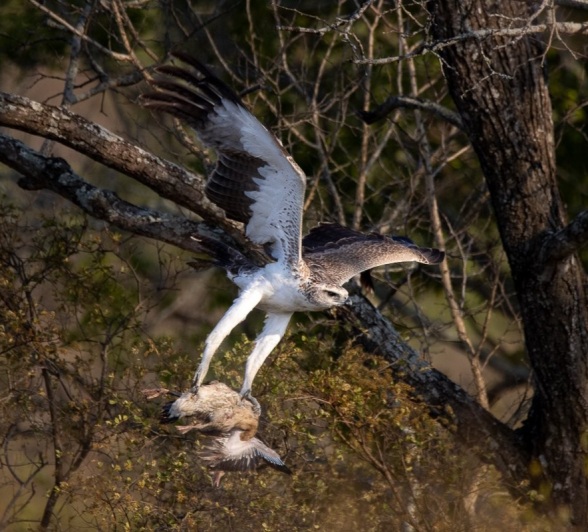
Warthogs are often overlooked in the bushveld, easily dismissed as just another common sight, but when you take a moment to really watch them, they’re full of character and charm. We stopped to observe a sounder of warthogs in an open clearing, peacefully going about their day — grazing, kneeling to feed, and flicking their tails as they moved through the grass. It was a wonderful reminder to slow down and appreciate the smaller, often unnoticed moments of the wild.
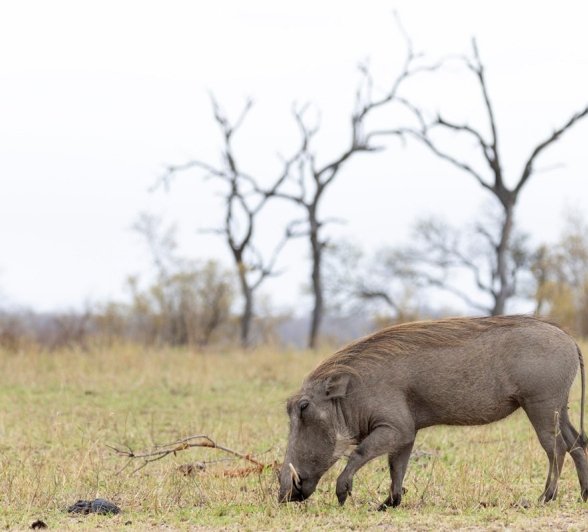
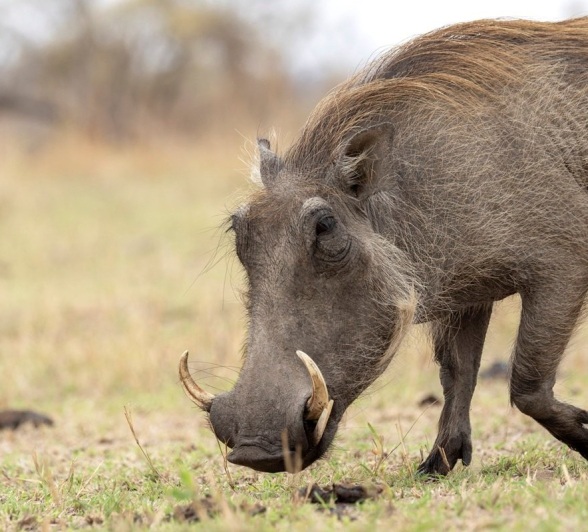
It’s always incredible to watch a large herd of buffalo moving together across the plains but there are often a few stragglers trailing behind — usually the older males who can no longer keep pace with the rest. We watched as a handful of these bulls slowly made their way toward the main herd, crossing a beautiful open expanse that created a dramatic scene.
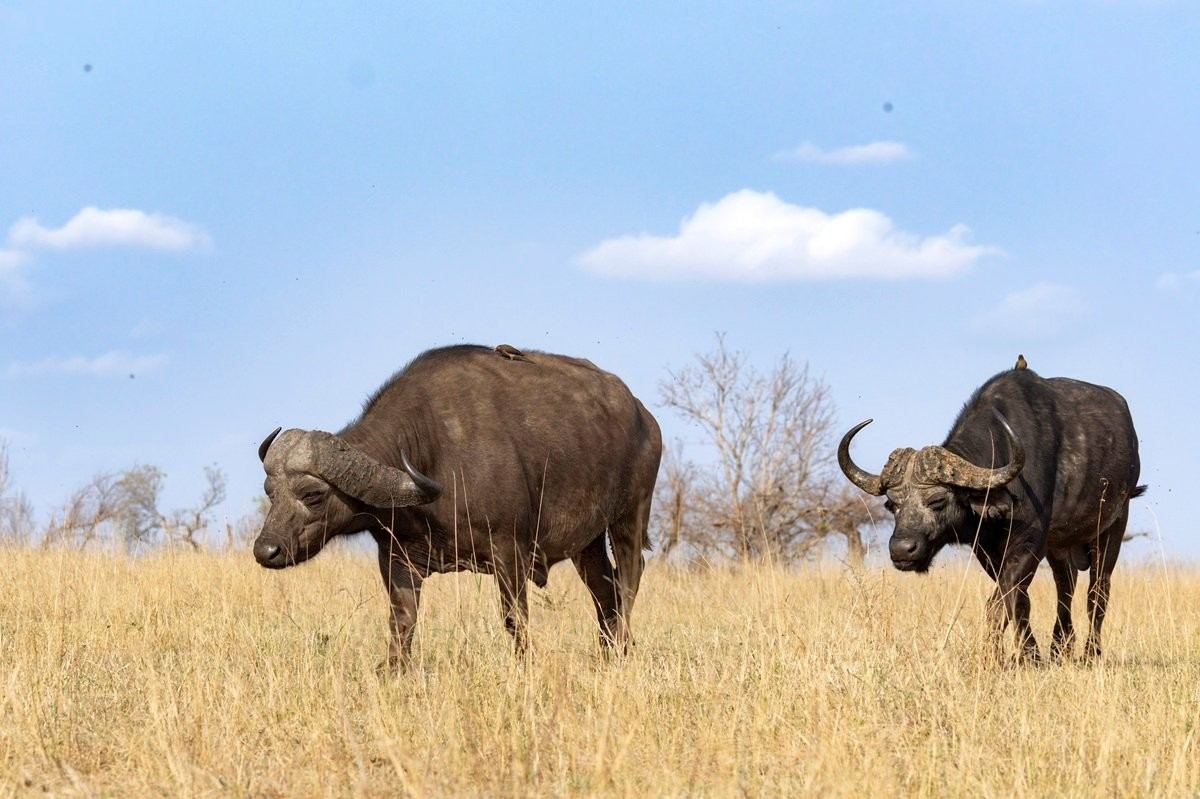
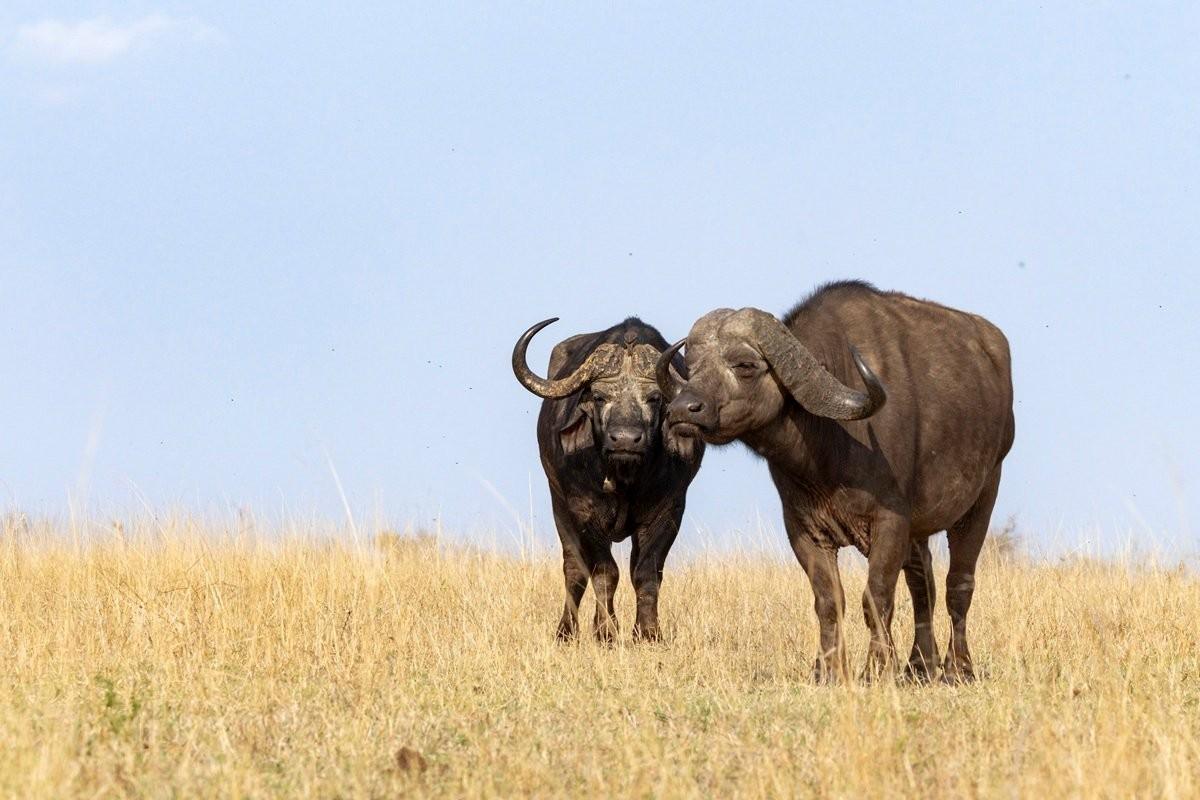
Along a winding road that followed a dry riverbed, we were fortunate to spot a Shikra. These birds are usually quite shy and tend to take off the moment a vehicle gets too close. Luckily for us, this individual remained perfectly still, calmly posing as we admired it. It even allowed us to reposition the vehicle for a few unique angles through the tangle of tree branches — a rare and rewarding encounter.
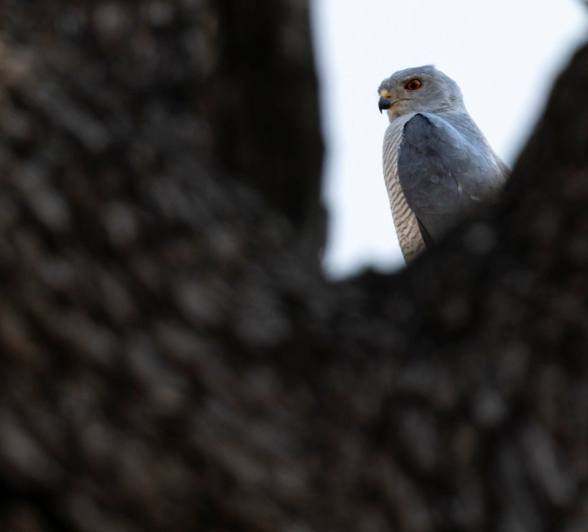
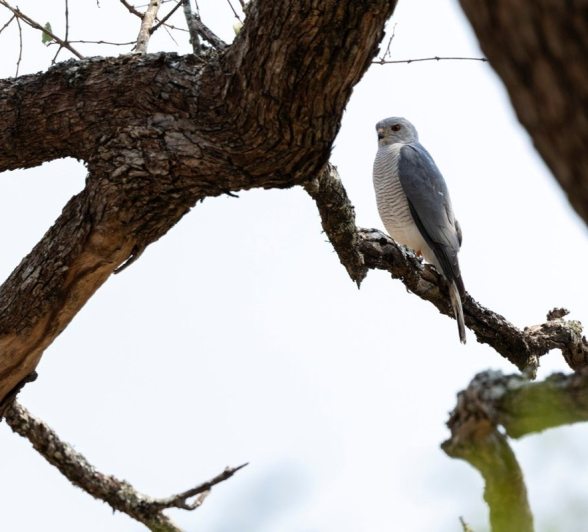
Late in the afternoon, we were treated to a wonderful sight as a steady stream of animals gathered at a small waterhole to quench their thirst before sunset. After the heat of the day, species such as buffalo and elephant often make their way to the water’s edge to drink, before retreating into the treeline for the safety and shelter of night.
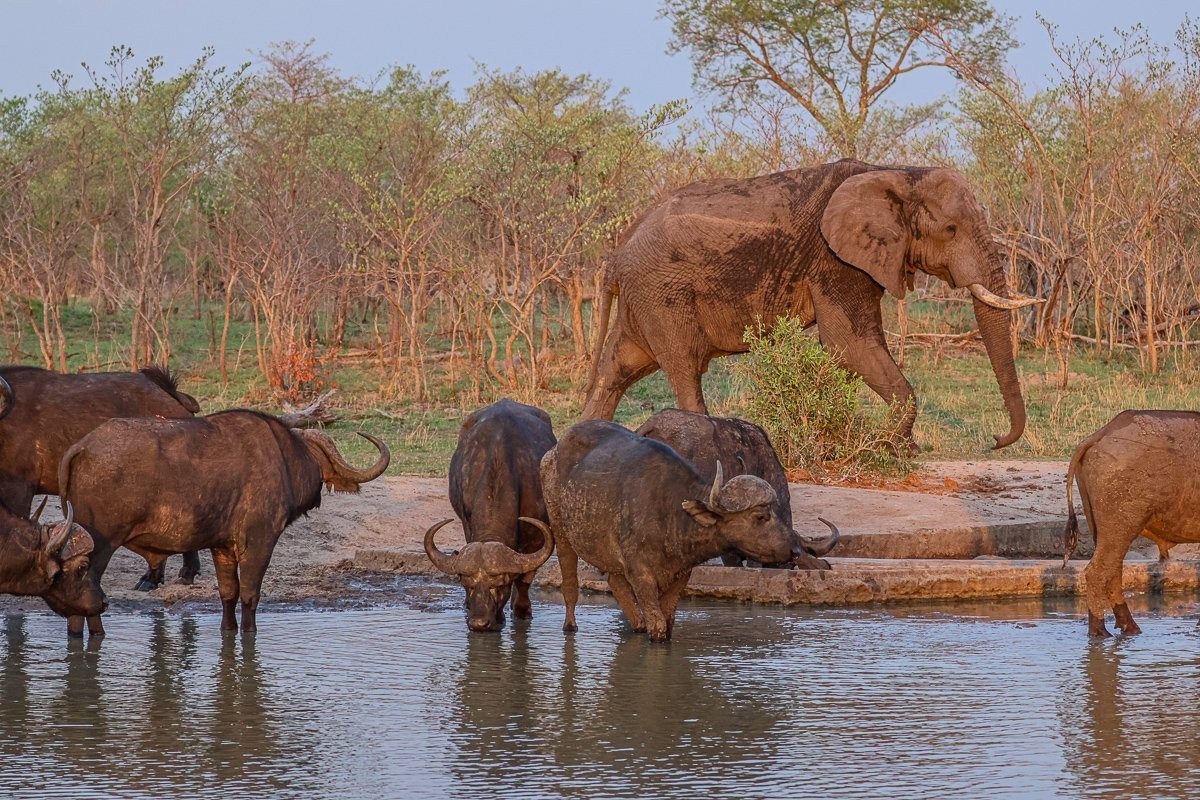
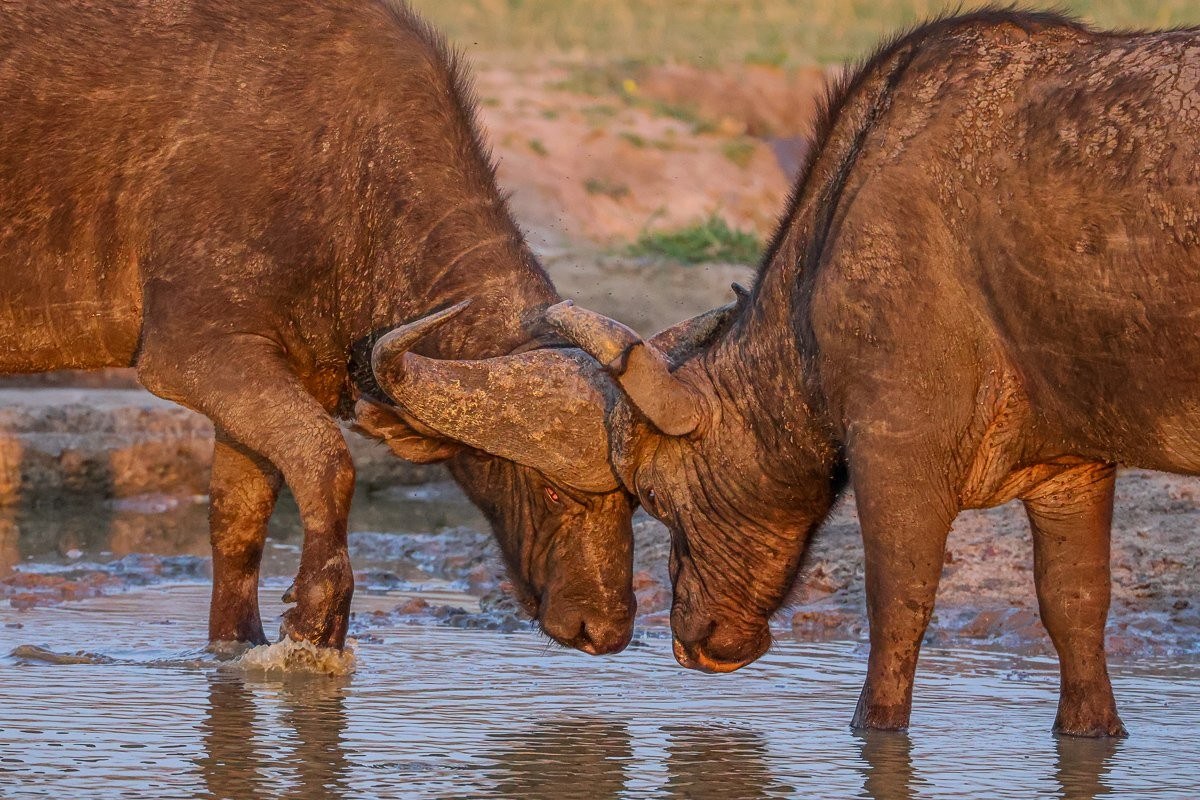
Until next time…
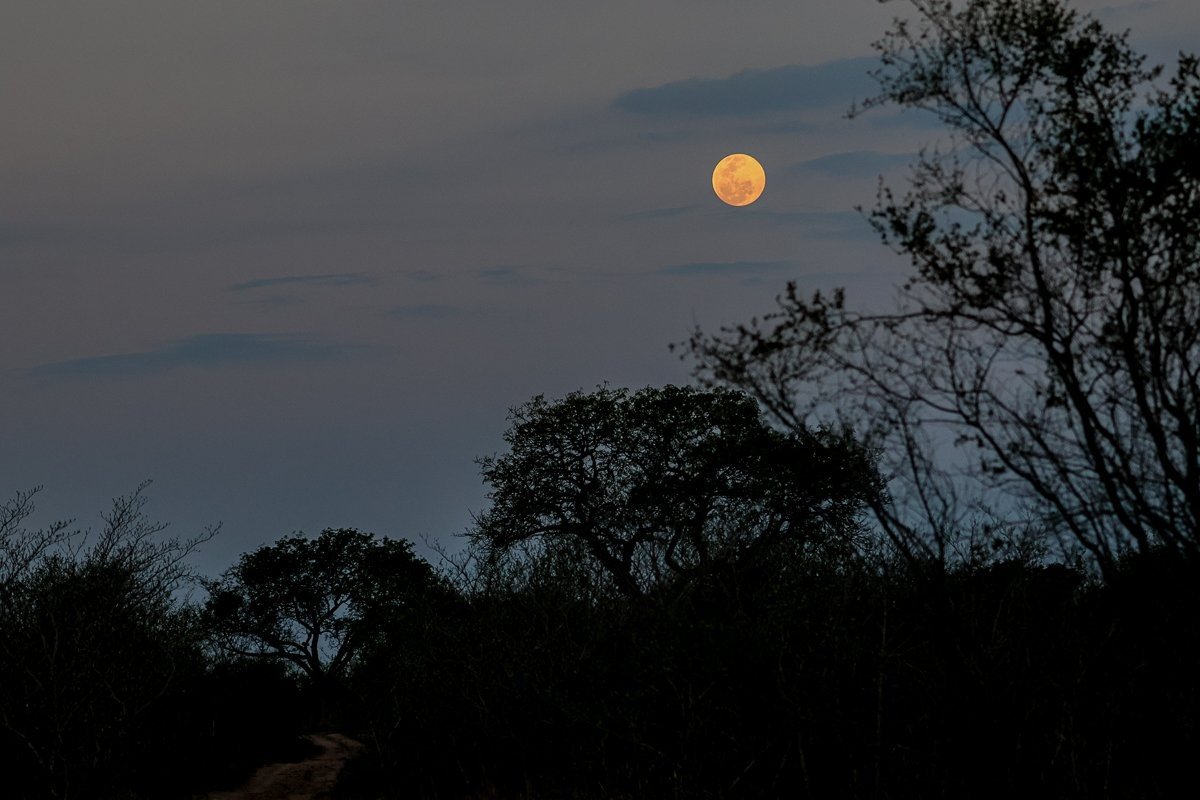
Blog by Wendy Claase
Images by Benjamin Loon, Jan Nel, Jana du Plessis, Ronald Mutero and Ruan Mey

